www.highereducationdigest.com
FEATURING INSIDE
Alex Lees Director, Tale Production
Bart Baesens Professor, KU Leuven, Lecturer, University of Southampton, & Founder, BlueCourses
Dr. Kristy Custer President of Educational Innovation, Generation Esports
Dr. Smitha Ranganathan Associate ProfessorContemporary Marketing, Brand Communication and Digital Strategy, S P Jain School of Global Management
Michael Goldstein Managing Director and Co-Creator, Center for Higher Education Transformation, Tyton Partners
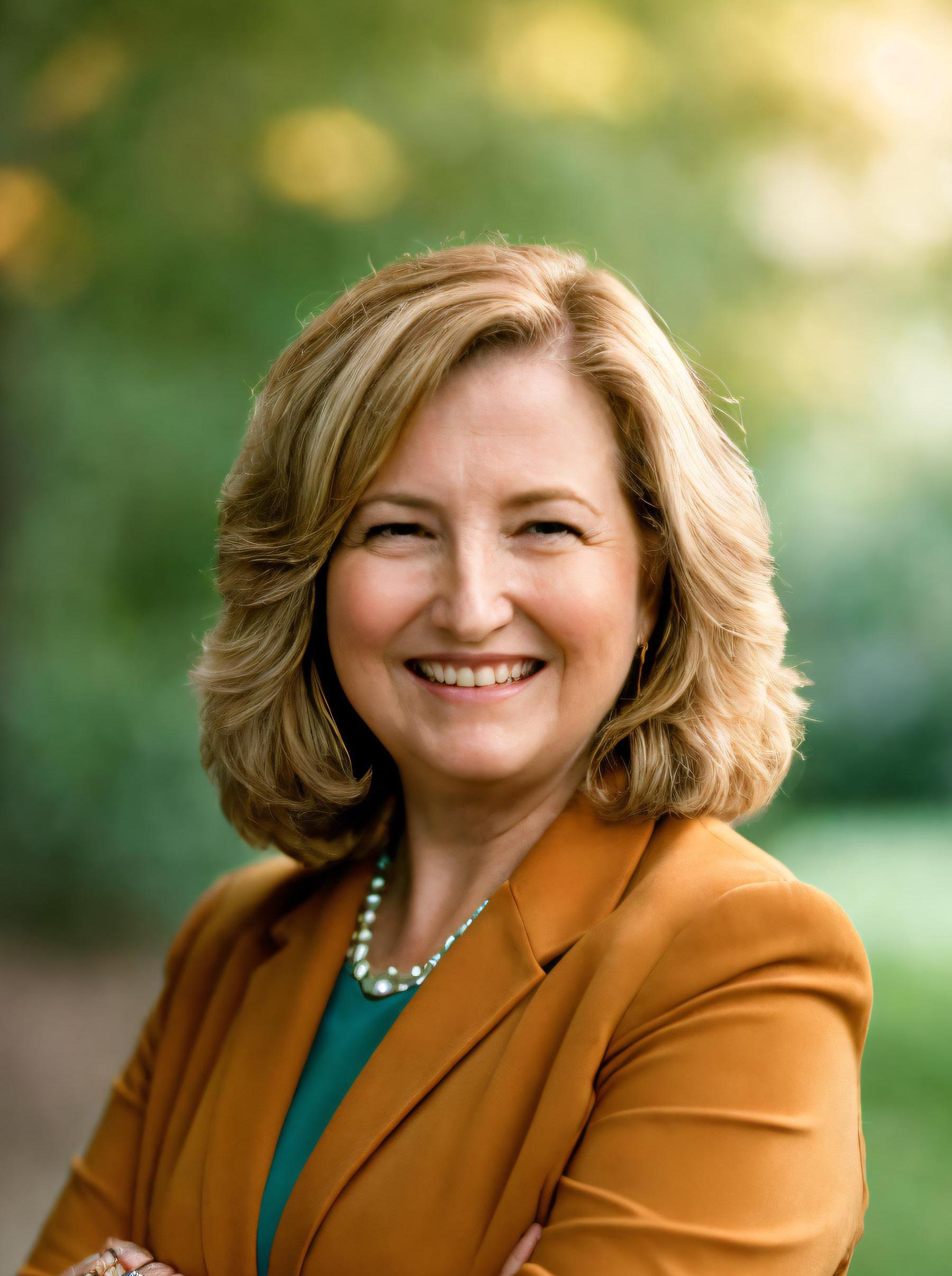
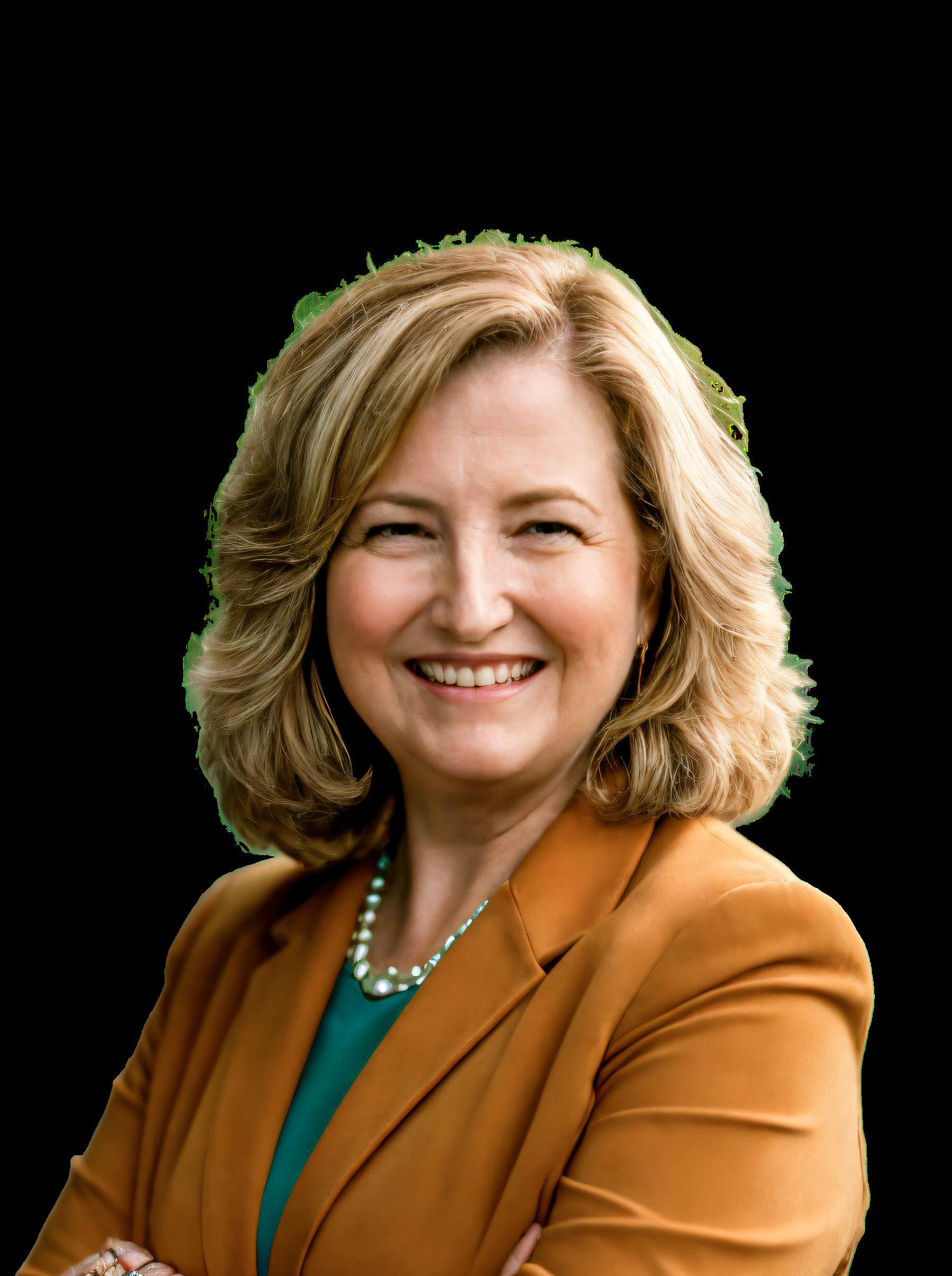
A COMMUNITY COLLEGE’S JOURNEY TO ADVANCE COMPLETION AND BUILD TRUST IN HIGHER EDUCATION GLOBAL EDITION JUNE 2024
PRESIDENT, FORSYTH TECHNICAL COMMUNITY COLLEGE
Rose Bruford College


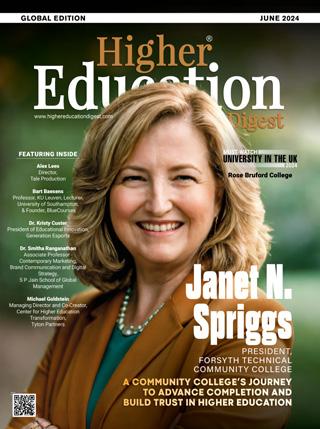
Managing Editor
Sarath Shyam
Consultant Editors
Dr. John Andrews
Emma James
Andrew Scott
Naomi Wilson
Stanly Lui
Joseph Alex
Creative Consultants
Charlie Jameson
Edwards Gonzalez
Branding & Marketing Partnerships
Jennifer Anderson
Alice Smith Lucy Jones
Anna Elza
Enquiry
admin@highereducationdigest.com

International Partnerships
admin@highereducationdigest.com
Americas 16192 Coastal Highway, Lewes, DE 19958, USA
Europe
27, Old Gloucester Street, London, WC1N 3AX, UK
Middle East & Africa
P.O. Box 48299, Dubai Silicon Oasis, Dubai, UAE
Asia-Pacific
Ramanashree Arcade, 18 MG Road, Bangalore – 560001, India
Higher Education Digest is a digital magazine published by Connecta Innovation Private Limited. All rights reserved. The opinions expressed in the content and pictures provided are those of the authors. They do not purport to reflect the opinions or views of the Connecta Innovation Private Limited or any of its members and we do not assume any responsibility. The publisher does not assume any responsibility for the advertisements, its content, pictures, and all representation of warranties made in such advertisements are those of the advertisers and not of the publisher.
Higher Education Digest is a Free Subscription digital magazine strictly not for sale and has to be strictly for internal private use only. Publisher does not assume any responsibility arising out of anyone printing copy of this digital magazine in any format and in any country and all matters related to that.
4 Higher Education Digest June 2024
Free Subscription June 2024 Vol - 6 Issue - 6
Discovering the Best in UK Education: A Journey Worth Taking
Remember the first time you thought about studying abroad? The excitement, the nerves, the endless possibilities? As we kick off a new academic year, the dream of pursuing higher education in the United Kingdom still holds that magic for many. With its rich history, innovative research, and vibrant culture, the UK continues to be a top destination for students worldwide. It’s not just about earning a degree; it’s about an experience that transforms you into a global citizen ready to make a difference.
In this issue of Higher Education Digest, we’re thrilled to present our “Must-Watch University in the UK – 2024.”
Here, we introduce to you, Rose Bruford College which stands committed to its mission: fostering a vibrant community of scholars, artists, and innovators devoted to excellence, inclusivity, and societal impact. Through rigorous academic programs, pioneering research endeavors, and immersive artistic experiences, the college empowers its
students to emerge as leaders in their respective fields, armed with both the skills and the fervor to enact meaningful change in society.
Our cover story takes you into the inspiring journey of Dr. Janet N. Spriggs, the President of Forsyth Technical Community College. With nearly 30 years in the North Carolina Community College System, Dr. Spriggs has been a force for change, fostering inclusive excellence and shaping educational paths. Her leadership roles, from Chief Operating Officer at Rowan-Cabarrus Community College to Vice President and Chief Financial Officer at Carteret Community College, highlight her dedication and impact.
This issue is packed with insights and inspiration. Whether you’re a student dreaming of studying in the UK, an educator, or someone invested in the education sector, we hope you find these stories both informative and uplifting. Let’s celebrate the power of education and the bright futures it can create.
Happy reading!
 Sarath Shyam
Sarath Shyam
5 Higher Education Digest June 2024
MANAGING EDITOR’S NOTE
10 COVER STORY
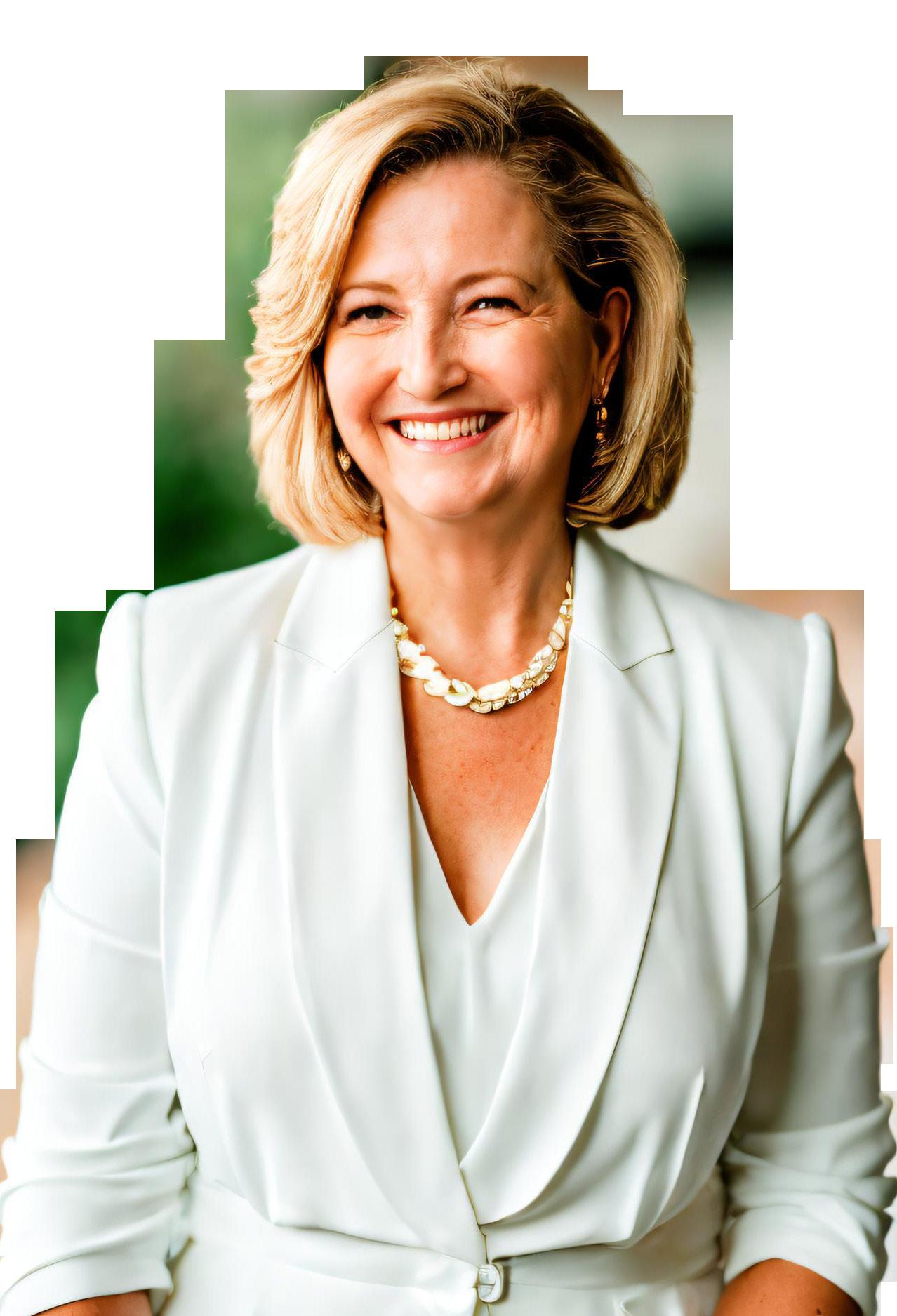
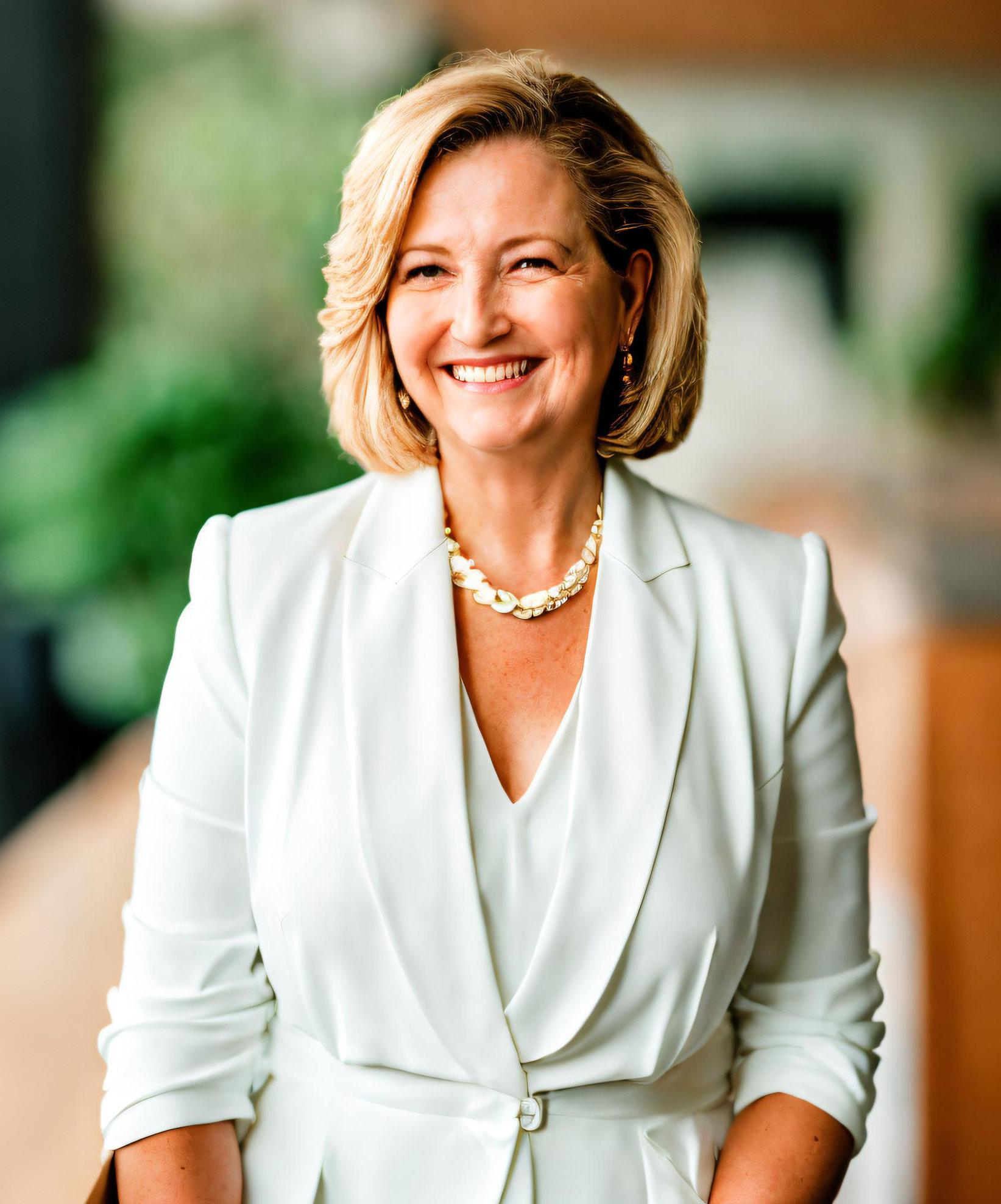
JANET N. SPRIGGS
PRESIDENT, FORSYTH TECHNICAL COMMUNITY COLLEGE
A COMMUNITY COLLEGE’S JOURNEY TO ADVANCE COMPLETION AND BUILD TRUST IN HIGHER EDUCATION
Higher Education Digest June 2024

ROSE BRUFORD COLLEGE
Where Innovation Meets Tradition in the Art of Performance
MUST-WATCH
UNIVERSITY IN THE UK 2024
MENTOR’S MANTRA
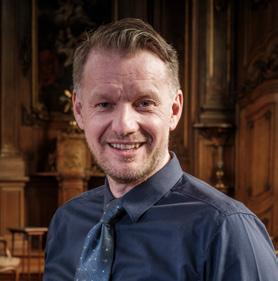
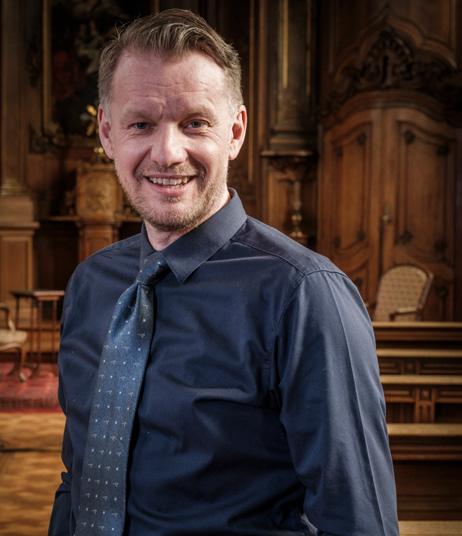
EMPOWERING STUDENTS TO SUCCEED IN THE AI ERA
Bart Baesens, Professor, KU Leuven, Lecturer, University of Southampton & Founder, BlueCourses
7 Higher Education Digest June 2024 28
18
INDUSTRY PERSPECTIVE
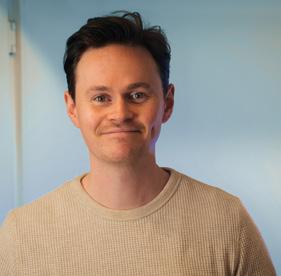
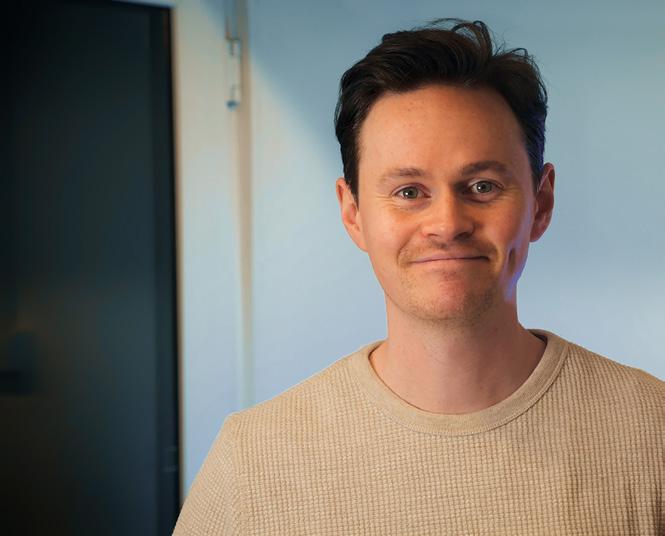
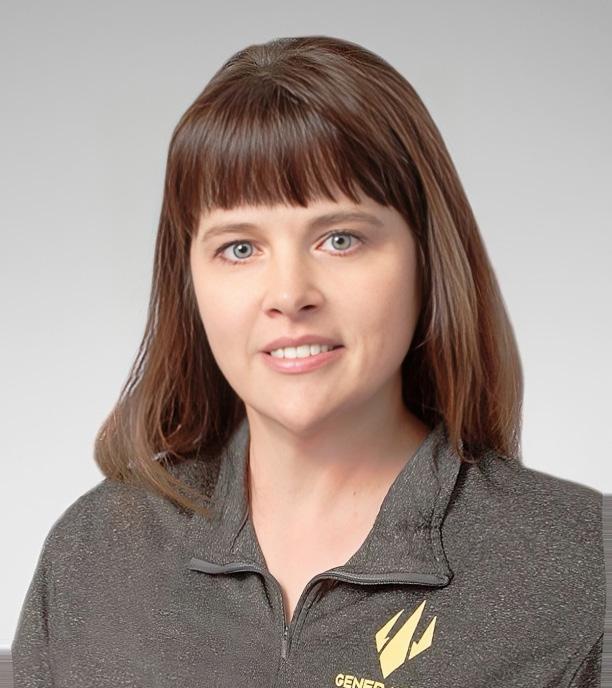
LEVERAGING THE POTENTIAL OF ESPORTS IN HIGHER EDUCATION TO ENGAGE MALE STUDENTS
Dr. Kristy Custer, President of Educational Innovation for Generation Esports
ENHANCING STAKEHOLDER ENGAGEMENT THROUGH FILM: TALES FROM THE EAST MIDLANDS
Alex Lees, Director, Tale Production
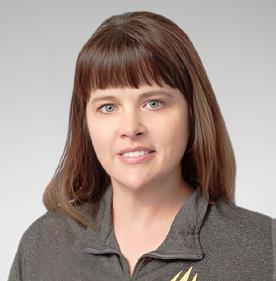
8 Higher Education Digest June 2024
38
52

SHAPING INDIVIDUALS WHO CAN, IN THEIR ESSENCE, CREATE IMPACTFUL & MEANINGFUL BRANDS
Dr. Smitha Ranganathan, Associate Professor - Contemporary Marketing, Brand Communication and Digital Strategy – S P Jain School of Global Management
ACADEMIC VIEW

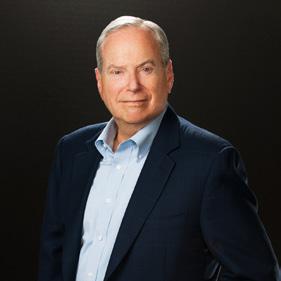
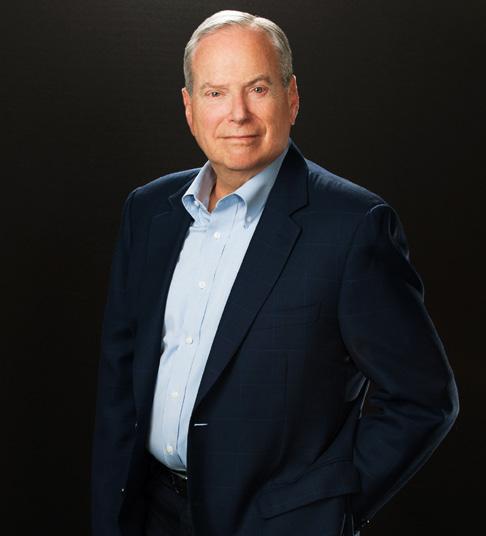
HELPING INSTITUTIONS & THEIR PARTNERS FIND & IMPLEMENT RIGHT STRATEGIES, STRUCTURES & RESOURCES NECESSARY TO SUCCEED IN THE POST-PANDEMIC WORLD
Michael Goldstein, Managing Director and Co-Creator, Center for Higher Education Transformation, Tyton Partners 58
9 Higher Education Digest June 2024
44
JANET N. SPRIGGS
PRESIDENT, FORSYTH TECHNICAL COMMUNITY COLLEGE
A COMMUNITY COLLEGE’S JOURNEY TO ADVANCE COMPLETION AND BUILD TRUST IN HIGHER EDUCATION
Dr. Janet N. Spriggs, the seventh President of Forsyth Technical Community College since January 1, 2019, is dedicated to transforming lives through education. With nearly three decades of experience in the North Carolina Community College System, she has held significant roles, including Chief Operating Officer at Rowan-Cabarrus Community College and Vice President and Chief Financial Officer at Carteret Community College. Dr. Spriggs is a first-generation, lowincome, former community college student who profoundly understands the power of education. Her leadership is recognized nationally, having been selected twice as an Aspen Presidential Fellow. She holds a doctorate in higher education administration from Northeastern University, a master’s from Nova Southeastern University, and a bachelor’s from Roger Williams University. Committed to student success and equitable economic mobility, Dr. Spriggs serves on various boards, including as Vice President for Membership for the American Association of Women in Community Colleges, Belk Center Advisory Board at NC State University, and the Board for Greater Winston-Salem, Inc. She advocates for community colleges as engines for breaking the cycle of poverty and advancing workforce development


Education
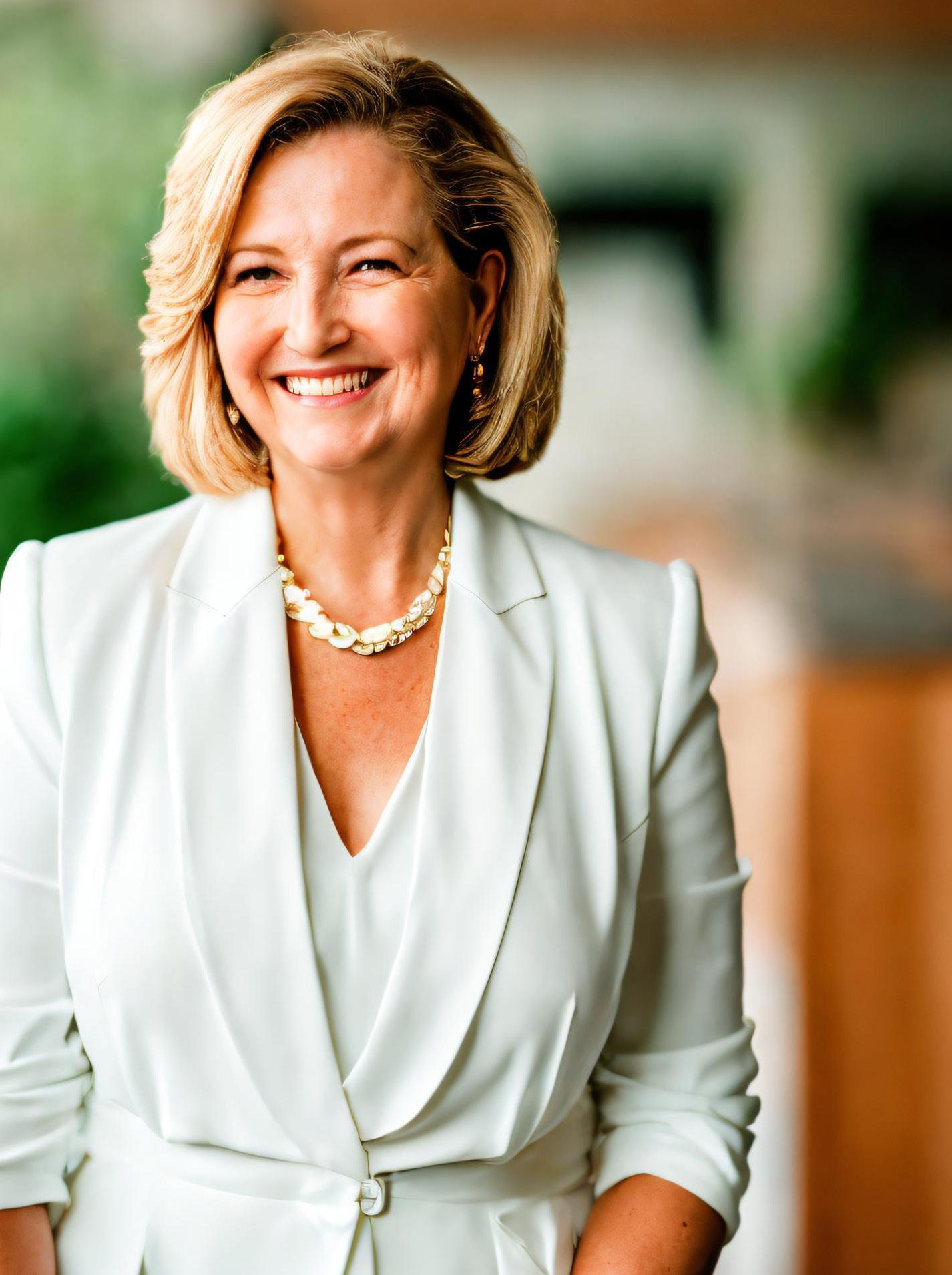
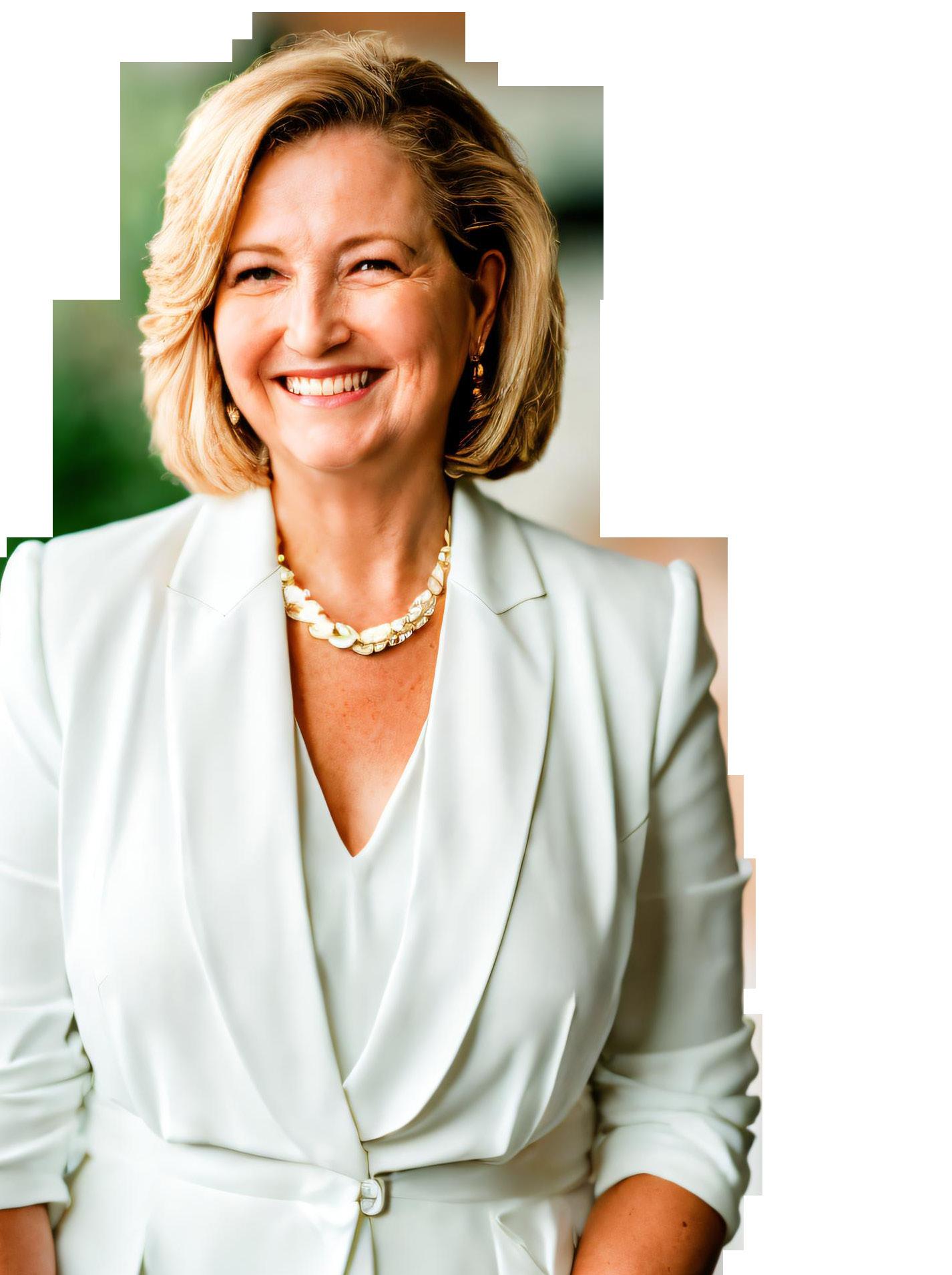
Education June 2024
Since the early 20th century, America’s two-year colleges have expanded access to higher education, serving as gateways to postsecondary degrees for low-income and traditionally excluded students. However, simply opening doors to education does not guarantee success, as many students face barriers such as financial
constraints, family obligations, mental health challenges, and lack of preparedness.
While access is necessary, success is more critical. Over time, community colleges shifted from simply prioritizing enrolling students to a model that addressed access and success. This new paradigm focused community college leaders on mitigating barriers inside and
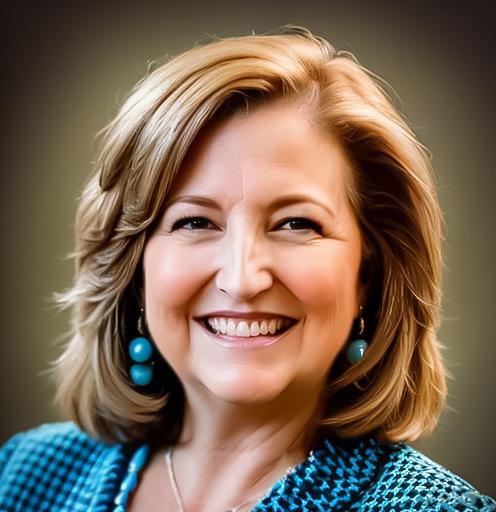
12 Higher Education Digest June 2024
Community colleges are not just educational institutions but also powerful drivers of workforce and economic development
outside the classroom, creating a national imperative for comprehensive and multifaceted approaches to help more students complete their degrees. Today, community college programs address the needs of very diverse student populations through holistic support services, tailored academic pathways, and flexible learning options
Over the past decade, we have realized another shift in our unique model for twoyear postsecondary institutions that extends our work beyond graduation day. Coined “Community College 3.0” by Josh Wyner, Executive Director for the Aspen Institute’s College Excellence Program, this work accepts the imperative for community colleges to prepare our students for familysustaining wage careers, ensuring their education translates into meaningful, stable, and sustainable employment.
Community colleges are not just educational institutions but also powerful drivers of workforce and economic development. In an era that increasingly scrutinizes the value of higher education, community colleges have a unique opportunity to embrace the Community College 3.0 framework to restore faith in higher education. Here are four key opportunities for how institutions can embrace Community College 3.0 to support workforce development and cultivate trust.
1. Build a Shared Vision and a Strategic Roadmap for Success. A key component of the work within the Community College 3.0 framework is ensuring that all college stakeholders—administrators, faculty, and staff—embrace a shared vision for where the institution is headed. Working together to
13 Higher Education Digest June 2024
create a collective vision is essential, and once the vision is adopted, everyone owns it as the key to their individual and the colleges’ collective success. The vision becomes the foundation for a strategic plan that serves as a roadmap for achieving the shared vision. Every stakeholder must understand their vital role in supporting student success, and this unified approach not only enhances the educational experience for students but also strengthens the institution’s ability to adapt to the changing demands of the workforce and economic landscape. Through continuous professional development, inclusive decisionmaking processes, and clear communication of goals, institutions can create collective ownership and empower their communities to work together to equitably apply their mission to all students, regardless of their background or circumstances.
2. Holistic Supports for Student Success.
Success is not solely determined by academic achievement. Supporting the whole student inside and outside the classroom is crucial. A comprehensive, holistic support initiative can provide a network of resources, including mental health services, housing and food insecurity assistance, emergency grants, childcare support services, a studentparent resource center, women’s centers, and minority male success initiatives. Such initiatives embody a commitment to removing the barriers that life can present, which often impede academic success. These holistic support services complement extensive educational offerings, such as tutoring and learning resource centers. In an era where many students and their families question postsecondary education’s value and return on investment, these services are particularly
crucial. Valuing and supporting students by demonstrating a genuine commitment to holistic student well-being and success fosters a sense of belonging and engagement. This approach helps build trust inside and outside the classroom, reinforcing the value of a community college education.
3. Human-Centered Design. Prioritizing an equitable, human-centered design approach in all aspects of work ensures that the voices of the students served are at the forefront of designing systems and programs. Collaborations with organizations focused on helping institutions cultivate human-centric design principles can exemplify the institution’s commitment. These principles must extend across the institution, influencing the college’s student success reform efforts inside and outside of the classroom. Some examples include programs focused on adult learner re-engagement, shorter terms program delivery models, and flexible/multimodal courses that allow students the choice and flexibility of attending classes in person or virtually, either synchronously or asynchronously. Through focus groups and other participatory methods of centering student voices in the design process, institutions can actively involve students in shaping the systems and processes that affect their educational journeys, and subsequently create more successful educational pathways, building trust by demonstrating how they value those they serve.
4. Partnerships. Education alone cannot create economic mobility and a sustainable workforce. To make a lasting impact, institutions must build strong partnerships with public and private entities, including community leaders, workforce
14 Higher Education Digest June 2024
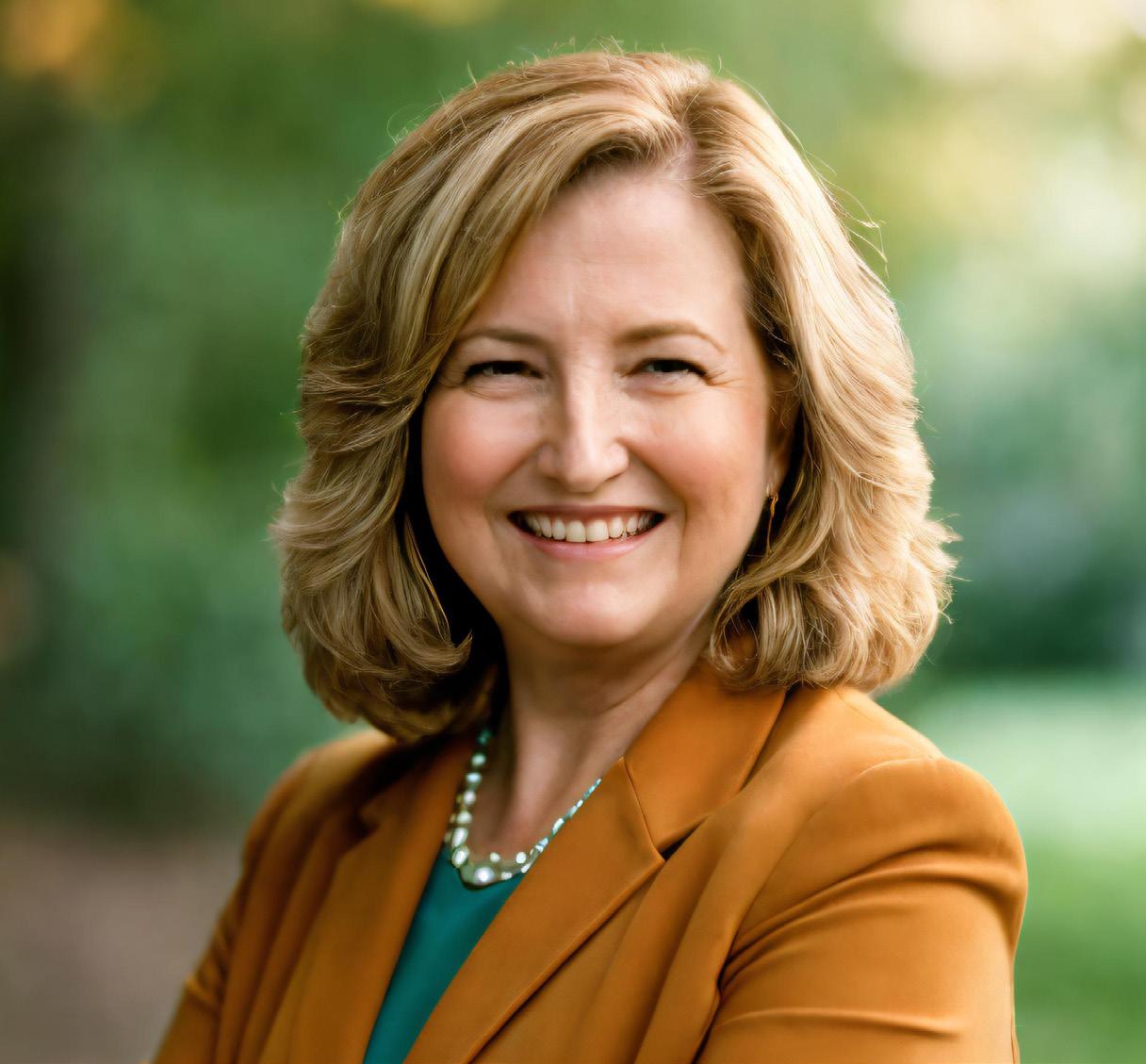
Prioritizing an equitable, human-centered design approach in all aspects of work ensures that the voices of the students served are at the forefront of designing systems and programs
Higher Education Digest June 2024
Workforce development hubs, in collaboration with local workforce development boards, non-profit organizations, and school systems, can serve as coordination points to provide resources for job seekers and connect employers with potential employees
and economic developers, businesses, industries, and non-profits. These partnerships are integral to focusing on post-graduation outcomes. By collaborating with local industries to align programs with the skills they need, institutions can ensure that graduates are workforce-ready. Work-based learning opportunities, such as apprenticeship programs that combine classroom instruction with hands-on experience, create a win for students to gain invaluable hands-on experience while being paid and a win for businesses needing labor to support growing workforce gaps. Workforce development hubs, in collaboration with local workforce development boards, non-profit organizations, and school systems, can serve as coordination points to provide resources for job seekers and connect employers with potential employees. These collective efforts enhance
program effectiveness and strengthen the local workforce and economy, demonstrating the power of collaboration in achieving meaningful and sustainable outcomes.
By building a shared vision, providing holistic support, embracing human-centered design, and forging strong partnerships, community colleges are not only enhancing student success but also restoring faith in higher education and providing students from diverse backgrounds with equitable access to education, the support they need to succeed, and opportunities to secure meaningful, familysustaining careers post-graduation. As community colleges continue to adapt and innovate, they remain committed to empowering lives and transforming communities, proving that they are essential drivers of workforce development and economic mobility.
16 Higher Education Digest June 2024


 MENTOR’S MANTRA
MENTOR’S MANTRA
Empowering Students to Succeed in the AI Era
Bart Baesens, Professor, KU Leuven, Lecturer, University of Southampton & Founder, BlueCourses
Bart Baesens is a professor of Data Science and AI at KU Leuven and a lecturer at the University of Southampton. He co-authored more than 250 scientific papers and 10 books. Bart received the OR Society’s Goodeve medal for best JORS paper in 2016 and the EURO 2014 and EURO 2017 award. Bart is listed in the top 2% of Stanford University’s new Database of Top Scientists in the World. He was also named one of the World’s top educators in Data Science by CDO magazine in 2021, 2023 and 2024. Bart is also founder of BlueCourses.
Recently, in an exclusive interview with Higher Education Digest, Bart shared his professional trajectory, the mission and vision of BlueCourses, the key insights on the future of big data and analytics, personal role models, significant career milestones, the secret mantra behind his success, future plans, and much more. The following excerpts are taken from the interview.
Higher Education
Rather than curtailing AI research and its applications, I strongly believe we need more AI
Prof Baesens, can you tell us about your professional background and areas of interest? How did you get started in analytics?
First of all, thank you very much for your interest in my work and career. I rather coincidentally started working in analytics (or data mining as it was referred to back in the days) in 1998. Having graduated with a Master of Business Informatics at KU Leuven, I started a PhD and got fascinated by credit risk modeling. During my PhD I started studying techniques like logistic regression, decision trees, survival analysis and neural networks to estimate the probability of default of obligors in retail as well as corporate portfolios. The focus of my research was on developing both accurate and interpretable credit risk models, something that would nowadays be referred to as XAI (eXplainable Artificial Intelligence). It was at that time that
the Basel Accords, aimed at developing and validating quantitative credit risk models, also gained traction and interest from lenders worldwide. So once graduated, I travelled around the world teaching banks, consulting firms and regulators how to quantify and monitor credit risk using analytics. This allowed me to gain a unique perspective on practical issues and challenges firms were facing when building, deploying and managing credit risk models which in turn led to identifying various new research topics. Meanwhile, I noted that many of the analytical techniques we studied and developed could also be used for fraud detection as well as marketing analytics (e.g., churn prediction, response scoring, customer lifetime value modeling, recommender systems, etc.) and started expanding my research and team in those areas. In fact, my research always centered around creating business impact
19 Higher Education Digest June 2024
with AI, either in terms of profitability, interpretability or identifying new AI inspired revenue generating business models. I set up my own research team and DataMiningApps community. Together with my colleague researchers, we managed to create a unique connect between research and industry which resulted into a fruitful multiplicator effect with various companies such as BNP Paribas Fortis, Allianz, Coca Cola, the Belgian government and ING funding our research as such triggering an efficient and productive cross-fertilization between both academia and industry.
In your opinion, what does the future of big data and analytics look like?
The introduction of Large Language Models (LLMs) has largely revolutionized the AI landscape. First and foremost, rather than being fearful, I can say that I am really very hopeful and excited about the future of AI. Rather than curtailing AI research and its applications, I strongly believe we need more AI. However, there are a few challenges ahead in my opinion.
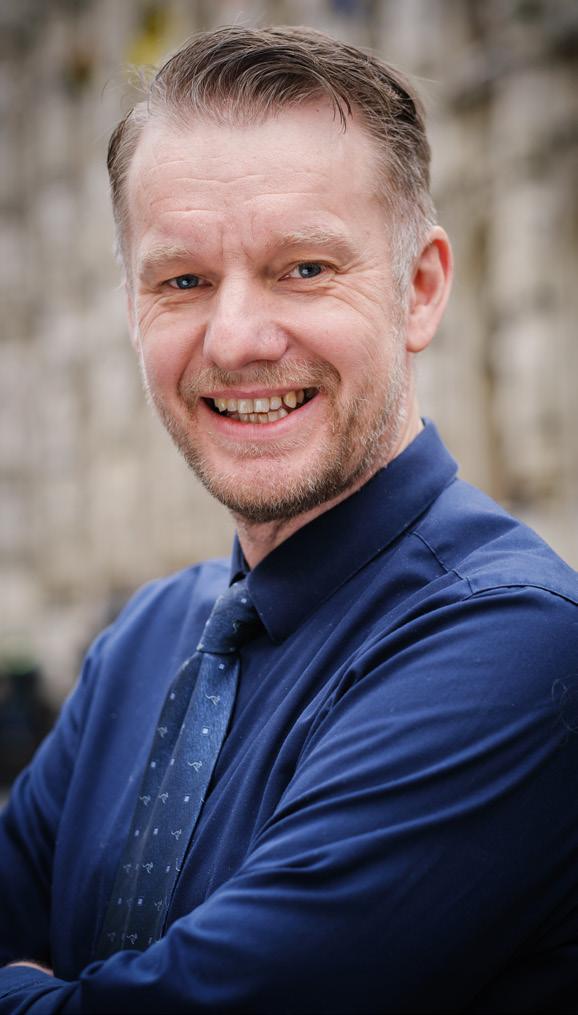
I expect that in the next few years or maybe decades we will see technological innovations aimed at developing AI agents that can autonomously design experiments and learn
20 Higher Education Digest June 2024
First and foremost, I think education is really key to the successful usage and further development of AI. Since AI continues to be further permeated in nearly all aspects of our daily lives, it is important that people are properly aware of this and learn to use this to their benefit. As an analogy, think about a car. If you can’t drive it but still use it, it’s a dangerous thing, the same holds for AI. So, we should educate people in terms of the basics of AI usage and structured thinking. Also, our youngsters should be educated to properly use AI. One particular risk I wish to highlight is the antropho-morphization of an AI model or it being perceived as a human rather than a piece of software or pre-programmed chatbot. People (and especially kids) should be aware that they are talking to a machine, an automated chatbot and not to a human and there should never be any emotional bonding whatsoever. After all, what distinguishes us humans from AI are our consciousness, emotions, humor, and free will. I don’t believe AI systems have free will since they are pre-programmed to optimise a pre-fixed objective function (typically using gradient descent and backpropagation) which they cannot go beyond.
The next important thing is the open sourcing of AI models as is currently being done by Meta and their Llama LLM. Given the widespread usage of AI, we can’t afford to have it controlled by only a few (most likely West-coast based US) companies offering proprietary closedsource models. Open sourcing AI models is a key prerequisite to make sure they are used in a transparent, fair and unbiased way and foster a co-creation inspired AI ecosystem. Another expected evolution is the further untapping
of new data sources originating from, e.g., IoT devices, smart-watches, self-driving cars (we still don’t have level 5 remember), siloed medical applications, etc. This will allow AI models to learn a lot more about the world we live in. Another challenge will be to have AI models capable of reasoning and planning. Right now, language models like ChatGPT are essentially autoregressive LLMs based on a decoder transformer architecture aimed at predicting the next token (e.g., a word) based upon the previous one. There is some scientific disagreement about their semantical understanding of text, but everyone seems to agree that it is very limited at most.
I expect that in the next few years or maybe decades we will see technological innovations aimed at developing AI agents that can autonomously design experiments and learn. Fundamental to these developments will be an improved paradigm for cause-and-effect reasoning. More concretely, generation of outputs is very different from causal prediction since the latter requires a proper understanding of the world and its state and actions taken. Think about the video generation systems we are seeing nowadays such as OpenAI with Sora and Google with Lumiere (both text to video models). The number of possible videos eligible in a generative setup (i.e., textual prompt to video) is enormous as such facilitating the task since getting one sample video out of the huge solution space is already sufficient. However, predicting the continuation of a real video is much harder since the solution space is a lot smaller and depends upon a proper understanding of the cause-and-effect relations and physical dependencies between objects in
21 Higher Education Digest June 2024
Just as the industrial revolution automated manual work, the AI revolution automates intellectual work
the video. That’s why I agree with Yann LeCun that the future of AI is not generative. An interesting approach he co-developed is Meta’s JEPA (Joint Embedding Predictive Architecture) model trained to make video continuation predictions in an abstract representation space only focusing on the essential parts of the video. I strongly believe research and applications of these types of multimodal AI combing text, images, audio and video with hopefully a proper understanding of cause-and-effect relationships will continue to grow.
Next, I also expect a surge in neurosymbolic AI research and applications aimed at combing neural network architectures (such as transformers, auto-encoders, etc.) with human-readable representations of patterns and knowledge often written down as simple IF-THEN business rules typically elicited from human experts based upon their experience and/or common sense. As to economic impact, in the short term we are likely to witness new non-sustainable thin applications based on an LLM API (similar to the Flashlight iPhone app that was later incorporated in iOS) as well as more sustainable applications (similar to Uber, Airbnb, Tinder, etc.). Finally, regulators will face various challenges as well. It is my belief that one should not regulate technology or R&D as is currently done in the EU (e.g., EU DSA Act, EU AI Act, etc.). Instead, I think it’s better to regulate applications of AI such as when it is used for self-driving cars, credit risk or in medical applications. As a concrete example I, and I think many others with me, would be perfectly fine with a black box complex uninterpretable deep learning neural network if it could cure cancer but would prefer to have a transparent, interpretable model for
22 Higher Education Digest June 2024

credit risk as I would like to know the reason why my credit request has been declined. Furthermore, by regulating too much, you risk constantly lagging behind the facts as once the regulation has been designed and is ready to be put in place, the technology is most likely to have further evolved with new accompanying challenges. Finally, creating an international level playing field as to regulation is also a key challenge.
What types of career opportunities are available in the field of data science?
Could you please share some insights?
First of all, there are some people that fear AI will cause massive job loss. Personally, I don’t believe this, quite on the contrary in fact. Just as the industrial revolution automated manual work, the AI revolution automates intellectual work. Since all our interactions with the
23 Higher Education Digest June 2024
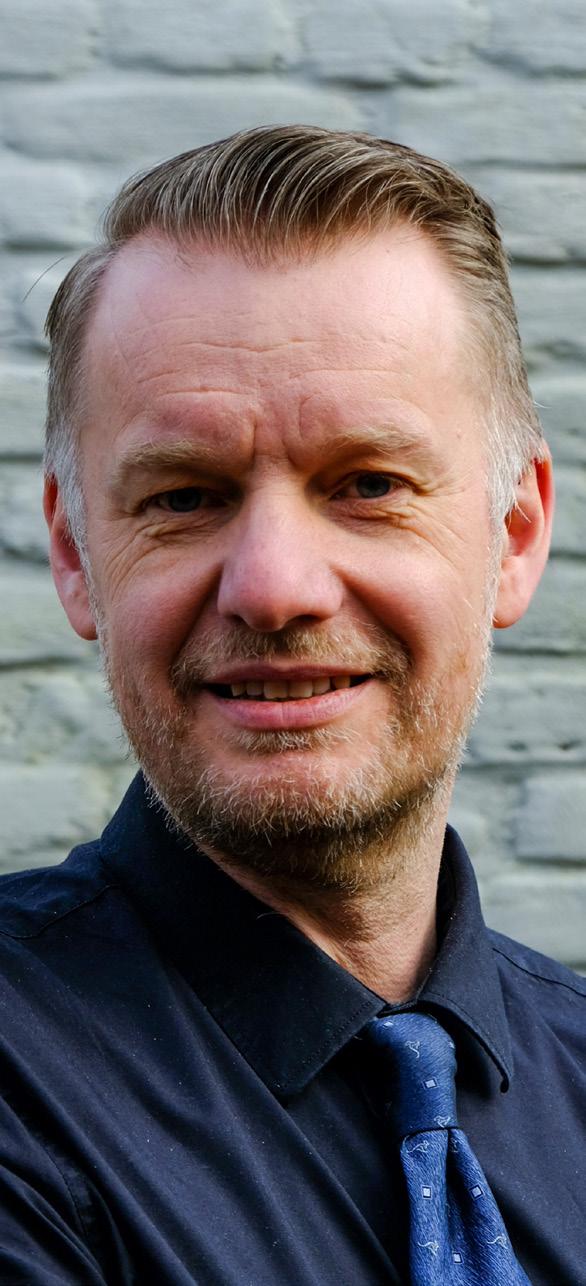
real world (using, e.g., our smartphone, car assistant, smart watch, AR/VR devices such as Apple Vision Pro or Meta Quest, web browser and social media, IoT based domestic appliances such as fridges, lights, dishwasher, etc.) continue to be further AI mediated, this will undoubtedly create many new types of job profiles. I hope you don’t mind me dreaming together with you or maybe even hallucinating a bit further upon this. At this very moment we see companies posting job positions for prompt engineers, people who are capable of developing and finetune high quality prompts for Large Language Models in order to develop new Natural Language Processing (NLP) applications. Personally, I don’t think this is a job profile that is very sustainable as LLMs will quickly catch up and learn how to properly respond to even very sketchy defined prompts. Some more sustainable jobs in AI are the following. The first important job is that of an AI translator. These are people who can match AI technology with business needs or speak AI just like they speak English or any other language. Modern day AI technology is not that good yet at reasoning and planning, but we will undoubtedly see more progress in this area with technology aimed at defining AI agents capable of autonomously designing actions (e.g., a marketing campaign, a fraud investigation, a complaint handling, a job posting and hiring process) or experiments (e.g., in a medical, chemical or agricultural setting). The job profile manager of AI agents will then be responsible to manage the 24/7 available AI agent workforce, keep them updated and properly trained with new data, make sure they are well configured and collaborate efficiently (e.g., may be even have them debate and learn
Higher Education Digest June 2024
from each other), all obviously in line with the continuously evolving ethical and regulatory guidelines. The recent launch of Meta’s Quest and Apple’s Vision Pro both immersive AR/VR headsets providing interactive 3D experiences for, e.g., gaming, entertainment, fitness, travelling, etc. might create job profiles such as AI Augmented/Virtual Reality architect, AI Graphics Engineer or Computer Vision specialist. I also believe new job profiles will be created in, e.g., the cultural sector. I strongly believe in people’s creativity and new technology untaps new sources of creativity. Hence, at this very moment we are already seeing jobs such as AI artist with skill prowess in Stable Diffusion, DALL E, Midjourney, etc. AI ethics specialists are needed to help us decide what data can be used for what purpose and how transparent should the AI models be
depending upon the purpose. We will witness AI application-oriented job profiles such as AI Climate Expert, AI Cybersecurity expert, AI Supply Chain expert, AI movie director, AI software engineer, etc. Finally, given that the whole AI domain currently evolves at warp speed, we observe an explosion of AI researchers (especially in industry rather than academia), obviously also a not to be underestimated job profile with growing opportunities.
With extensive years of industry experience, according to you, what skills or characteristics make someone a seasoned data scientist?
I have seen quite a few data scientists and had the pleasure to work with some of them, both academically as well as consulting wise. In my opinion, the key skills for seasoned data
AI ethics specialists are needed to help us decide what data can be used for what purpose and how transparent should the AI models be depending upon the purpose
25 Higher Education Digest June 2024
The field of data science and AI is evolving faster than ever before such that without a sound passion, it’s almost impossible to keep up with new technological developments
scientists are passion, technological background, creativity and team spirit.
The field of data science and AI is evolving faster than ever before such that without a sound passion, it’s almost impossible to keep up with new technological developments. I actually find this quite challenging myself as well. A seasoned data scientist also has a rock-solid technological background, has been trained in Python, Keras, PyTorch, etc. and has actually developed AI models deep down in the data mud filthy trenches end-to-end themselves. S(he) should have experience in the grunt work such as defining the business problem to be solved, the data gathering and preprocessing, the AI model development and evaluation, and the successful deployment and monitoring thereof. Only then they will be able to properly assess the potential of emerging AI technologies and identify business opportunities. Next, creativity is key. A good data scientist is able to think out of the box. S(He) can properly assess new technologies such as Deep Learning, Large Language Models, Stable Diffusion, etc. and identify various ways of leveraging this to either optimize existing business processes or even develop entirely new business models. That’s why we see more and more job openings for AI translators as mentioned above. Finally, no data scientist works in isolation. Given the pervasive and disruptive nature of AI applications both internally across all business departments as well as externally when engaging with customers or other third parties (e.g., suppliers, government, etc.) seasoned data scientists should be excellent team players and be able to successfully collaborate and communicate with, e.g., business people, IT guys, auditors, ethical specialists, regulators, and yes may be even AI scientists like me.
26 Higher Education Digest June 2024






MUST-WATCH
UNIVERSITY IN THE UK 2024
ROSE BRUFORD COLLEGE
Where Innovation Meets Tradition in the Art of Performance
Rose Bruford College stands committed to its mission:
fostering a vibrant community of scholars, artists, and innovators devoted to excellence, inclusivity, and societal impact. Through rigorous academic programs, pioneering research endeavors, and immersive artistic experiences, the college empowers its students to emerge as leaders in their respective fields, armed with both the skills and the fervor to enact meaningful change in society.
Speaking about the postgraduate programs, Professor Stephen Farrier, Director of Research and Academic Innovation at Rose Bruford College, highlights their diverse specializations, stating,

28 Higher Education Digest June 2024

Rose Bruford College boasts a robust selection of eight postgraduate programs at its Sidcup campus, complemented by three additional programs in Berlin
Higher Education Digest June 2024
“Our postgraduate programs range from intense Actor Performer training to innovative explorations shaping the future of performance.” These programs are designed to cultivate practitioner artists who operate at an advanced level across a spectrum of theater and performance settings.
Professor Farrier emphasizes the emphasis on high-quality work within the suite of programs offered at the college, noting that each
program is characterized by rich exploration and developmental opportunities for students’ practices. Furthermore, the intimate scale of the college and small class sizes foster close-knit networks and friendships among students, bolstering their aspirations as performers and creators. Moreover, students benefit greatly from close collaboration with industry professionals and renowned figures in the theater and performance realm.

30 Higher Education Digest June 2024
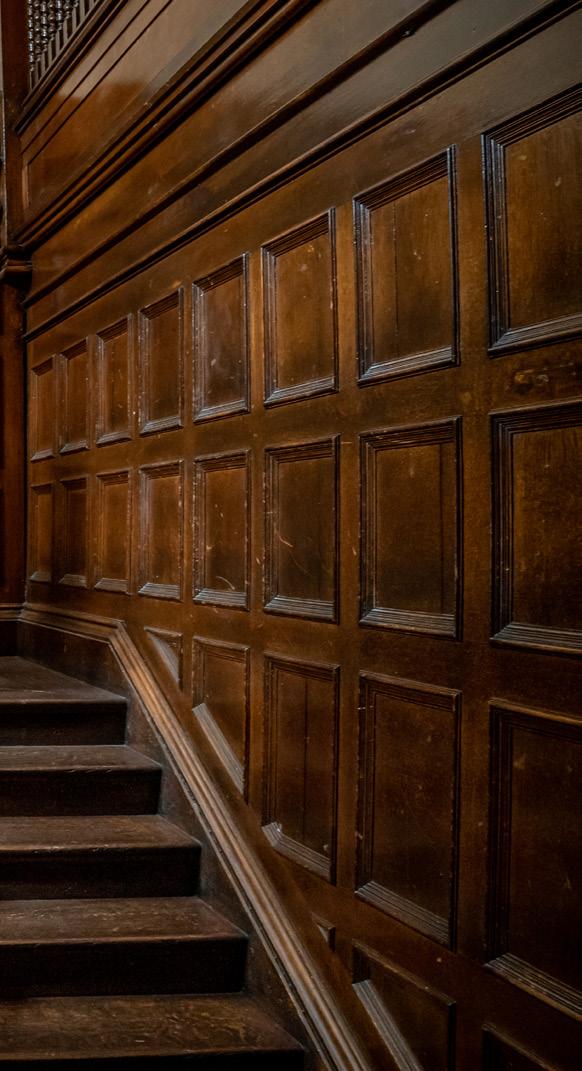
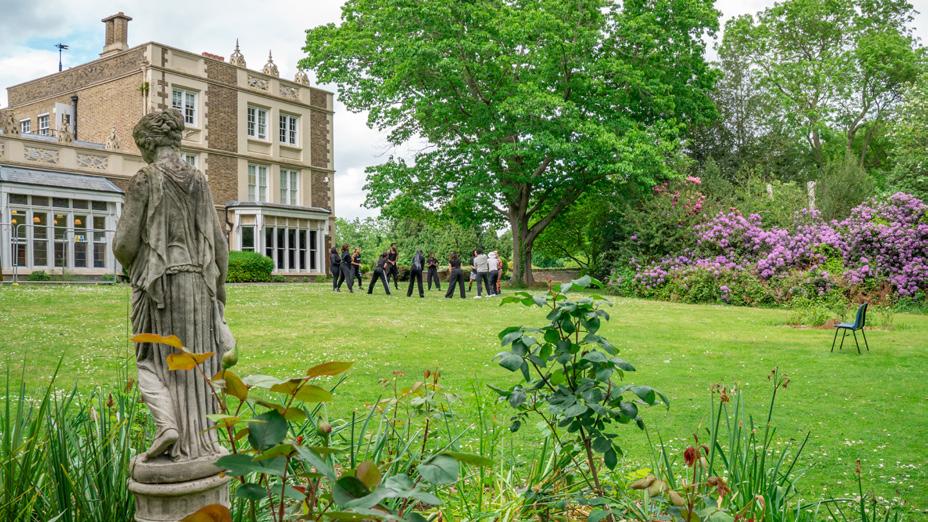
Diverse Postgraduate Programs
Rose Bruford College boasts a robust selection of eight postgraduate programs at its Sidcup campus, complemented by three additional programs in Berlin. Moreover, the college collaborates with the University of East London to offer an MPhil/PhD program.
Discussing the Actor and Performer Training MA/MFA program, Professor Farrier emphasizes its dual focus on intensive advanced training and rigorous academic study. He remarks, “This practice-based program equips students with the skills they need to excel as actors and performers while engaging in meaningful performance research.”
The Actor Musicianship MA/MFA program extends the college’s groundbreaking work in the field, leveraging its strong connections to theater-makers, directors, and performers. Professor Farrier notes, “Through vocational training and practice research, this program
31 Higher Education Digest June 2024
Rose Bruford College’s diverse postgraduate programs revolve around theater and performance in its broadest sense, each designed to enrich academic learning and research endeavors
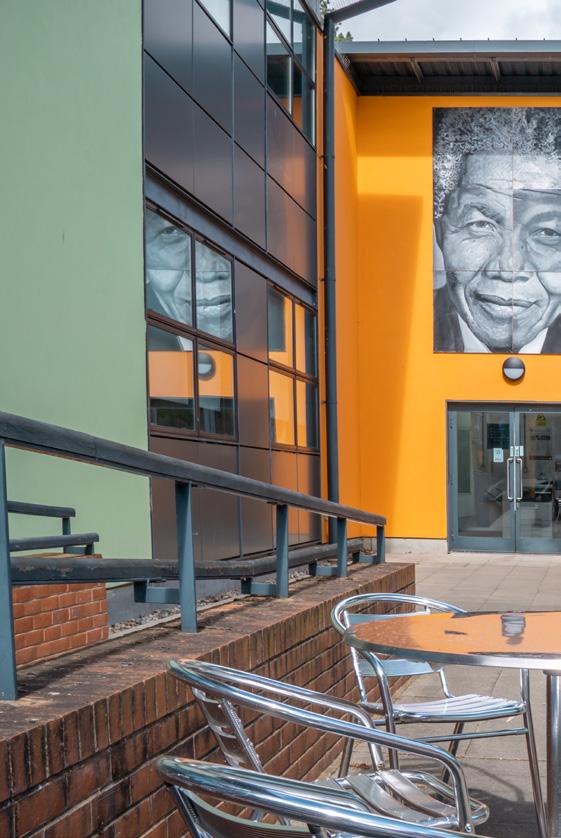
fosters interdisciplinary approaches to theater-making, emphasizing innovation and responsiveness to audience, place, and space.”
The Collaborative Theatre Making MA/ MFA program emphasizes ensemble-building, performer training, and the development of original work. Professor Farrier highlights the program’s unique feature, stating, “Students engage in critical reflection and practice research, moving creatively between different roles to cultivate skills in performance and independent making practice.”
32 Higher Education Digest June 2024
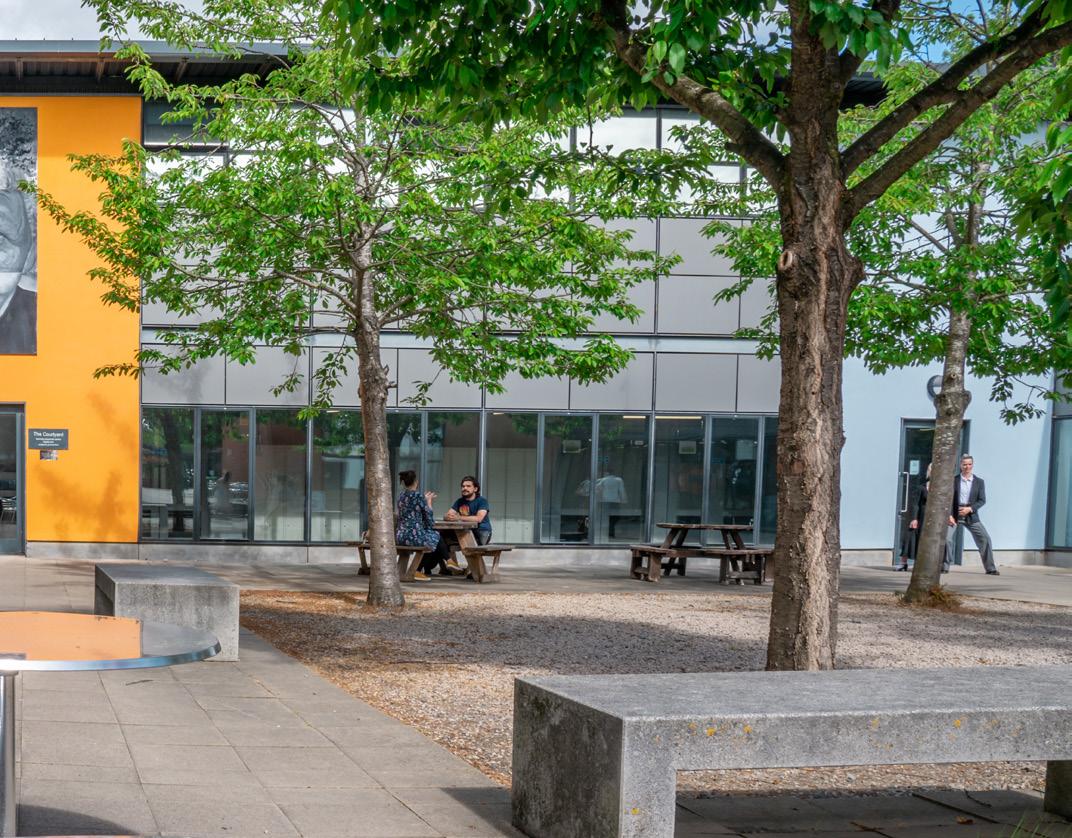
In the Contemporary Directing Practice MA/MFA program, students embark on an experiential journey to find their voice and vision as directors. Professor Farrier describes it as “an advanced and rigorous program that equips students with a diverse array of skills, techniques, and devices essential for contemporary directing.”
The Light in Performance MA/MFA program offers a hands-on exploration of light as a performance material. Professor Farrier explains, “Through experimental workshops
and specialist training, students delve into the current uses and applications of light, facilitated by industry partners.”
The Linklater Teaching Practice (Voice and Theatre Arts) MFA program stands out as the sole postgraduate program worldwide to confer Designated Linklater Teacher status alongside the MFA degree. Professor Farrier notes, “In close collaboration with Ms. Linklater, this program delves into the Linklater Voice method, providing candidates with a deep understanding of voice and theatre arts.”
33 Higher Education Digest June 2024
The Queer Performance MA program breaks new ground as the first of its kind, focusing exclusively on queer performance. Professor Farrier underscores its significance, stating, “This course offers comprehensive training in queer performance practices, led by renowned artists, academics, and researchers, fostering social engagement, experimentation, and interdisciplinary exploration.”
Finally, the Theatre for Young Audiences MA/MFA program offers practical training for performers and makers, emphasizing co-creative processes with children and young people. Professor Farrier highlights its innovative approach, saying, “This program redefines
Theatre for Young Audiences as a cutting-edge arts practice, encouraging collaboration that balances adult sensibilities with the creative voices of children and young people.”
Academic and Research Components
Rose Bruford College’s diverse postgraduate programs revolve around theater and performance in its broadest sense, each designed to enrich academic learning and research endeavors. Professor Farrier underscores the academic and research focus of these programs, stating, “Each program embeds academic and research elements, with varying approaches depending on students’ areas of focus.”
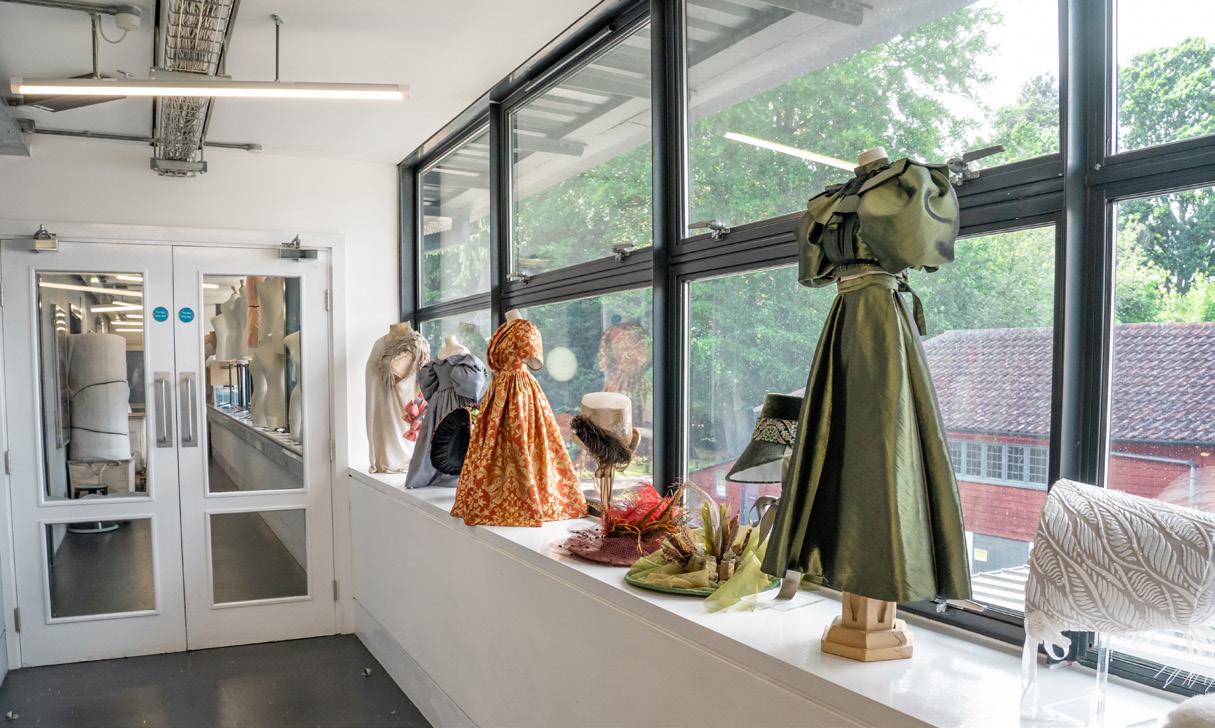
Higher Education Digest June 2024
Professor Farrier explains that the research approach differs across programs, with some placing greater emphasis on traditional academic research at certain stages while prioritizing practice-based research at others. He notes, “The balance and subject matter of academic work evolve throughout the program, guided by the students’ interests and progression.”
Students engage in a multitude of learning experiences across the postgraduate programs, including workshops, masterclasses, productions, presentations, research projects, and reflective exercises. Professor Farrier highlights the practical nature of much of the work, stating,
“The postgraduate activity is predominantly practical-based, fostering hands-on learning and skill development.”
While opportunities for cross-program and interdisciplinary collaboration exist within some programs, Professor Farrier clarifies that due to the overarching focus on drama, theater, and performance, crossdisciplinary opportunities outside these fields are limited. He explains, “Although there are opportunities for collaboration within programs, the College’s emphasis on drama, theater, and performance means that crossdisciplinary opportunities with programs outside these domains are not available.”
Given the Rose Bruford College’s specialization in drama, theater, and performance, its infrastructure revolves around cutting-edge performance spaces equipped with industrystandard technical facilities
35 Higher Education Digest June 2024
Bridging Industry and Academia
Rose Bruford College maintains strong ties with industry, a cornerstone of its postgraduate programs. Professor Farrier underscores this connection, stating, “All postgraduate programs leverage working artists from industry for teaching and mentorship, providing students with invaluable networking opportunities.”
Moreover, Professor Farrier emphasizes that each program actively engages with industry, facilitating networking and mentorship opportunities for students to develop their career paths. He notes, “Program Directors and the College maintain ongoing contact with graduates, offering support and guidance to sustain their careers beyond graduation.”
Given the college’s specialization in drama, theater, and performance, its infrastructure
revolves around cutting-edge performance spaces equipped with industry-standard technical facilities. Professor Farrier highlights, “Rose Bruford College boasts well-equipped spaces and industry-level performance venues, including collaborations with external venues in London and beyond.”
The college’s commitment to academic excellence is reflected in its extensive library resources and access to staff with advanced expertise in performance making. Professor Farrier explains, “The college’s library, accessible to all students, is responsive to their needs, while research trips constitute a vital component of the programs’ research elements.”
Recently, all UK-based postgraduate programs have been centralized at the Sidcup campus, offering opportunities for crossdelivery of classes and projects. Professor

36 Higher Education Digest June 2024
The most recent milestone for Rose Bruford College’s postgraduate programs is the introduction of the MA in Queer Performance
Farrier underscores the significance of this move, stating, “The college fosters an environment where postgraduate students can interact, fostering collaboration and cross-disciplinary learning opportunities.”
Pioneering Innovation
The most recent milestone for Rose Bruford College’s postgraduate programs is the introduction of the MA in Queer Performance. Professor Farrier highlights its significance, stating, “As the first of its kind globally, this program is set to graduate its inaugural cohort in late 2024, marking a groundbreaking initiative where student input plays a pivotal role in shaping the curriculum.”
The program’s innovative approach involves co-designing learning experiences with students through practical seminars and project intensives, positioning it at the forefront of academic exploration in the field of queer performance.
Professor Farrier underscores the college’s proactive stance in keeping abreast of developments within the performance industries, noting, “Due to its close alignment with the performance industries, Rose Bruford College remains agile and responsive to external shifts.” He emphasizes the agency of students as artist practitioners, enabling them to navigate a rapidly evolving landscape.
Moreover, the college’s commitment to adaptability extends beyond curriculum reviews and student feedback mechanisms. Rose Bruford College trains graduates who are poised to drive change within the performance industries, ensuring that its programs remain relevant and forwardthinking,” concludes Professor Farrier.
37 Higher Education Digest June 2024
INDUSTRY
PERSPECTIVE
Enhancing Stakeholder Engagement Through Film: Tales From The East Midlands
Alex Lees, Director, Tale Production
In the fast-paced landscape of higher education, hosting events can serve as a powerful catalyst for fostering stakeholder engagement and, often, facilitating the dissemination of research for academics.
From academic conferences, round tables, and PhD research symposiums, these gatherings serve as the perfect opportunity to enrich academic discourse and significantly
contribute to the institution’s KEF and REF scores. In this article, we explore best practices when running events in HE and how to extract maximum value post-event.
From this article, you will learn about the importance of employing the most appropriate media channels for each audience, how we have worked with the University of Leicester to disseminate their research
Events in higher education provide a platform for fostering meaningful interactions among diverse stakeholders, including students, faculty members, researchers, industry professionals, and policymakers
38 Higher Education Digest June 2024
Alex Lees is the Director of Tale Production, a video production company specialising in supporting Higher Education. With a rich background in product design engineering, Alex brings a unique perspective to every project, leveraging his process-oriented mindset to drive innovation and excellence. With a keen focus on supporting HE organisations, Tale Production is now a trusted partner for delivering industryleading videography projects. Over the past 9 years, he has collaborated with prestigious universities, including Loughborough University, Durham University, and the University of Leicester.
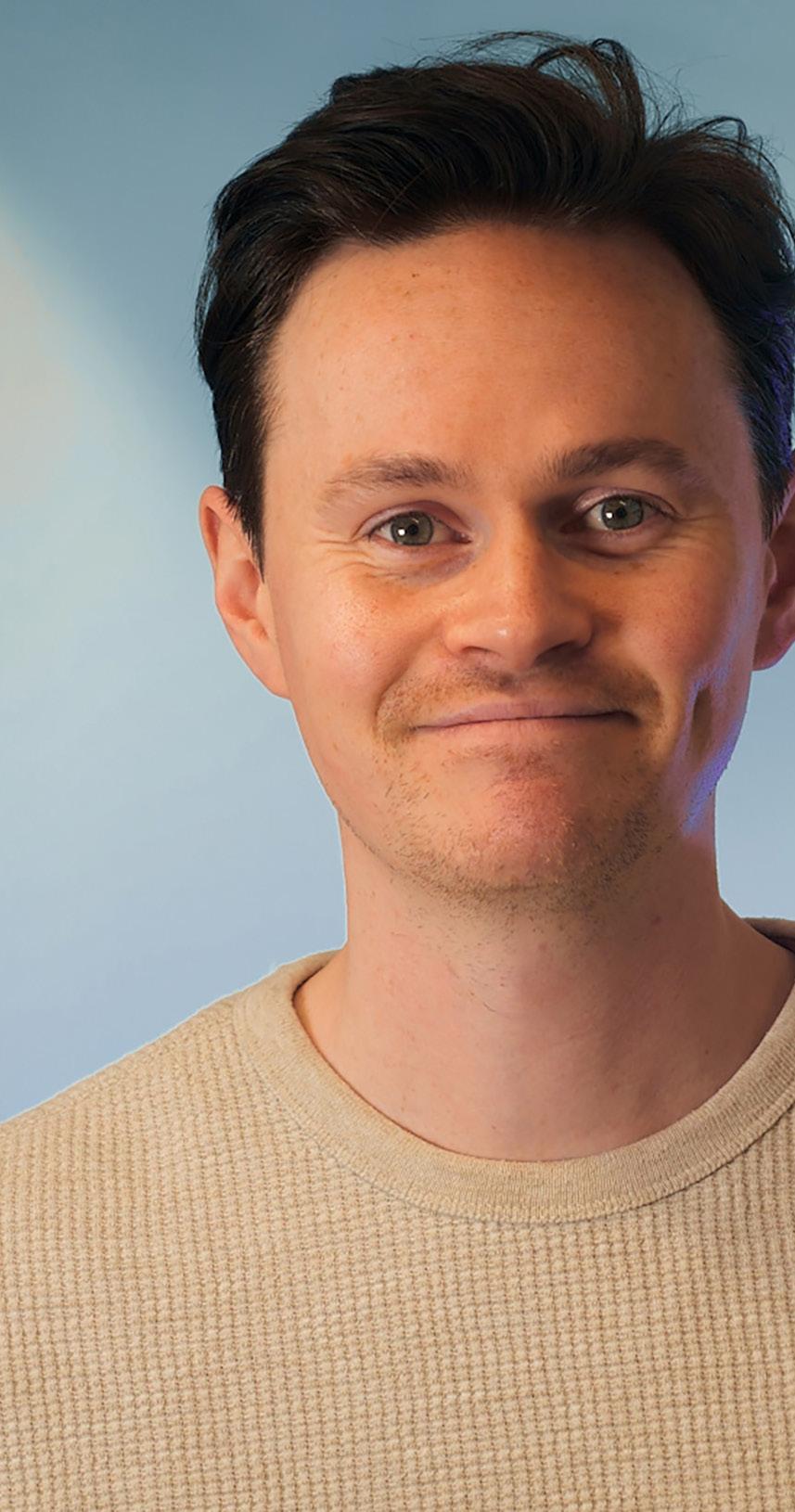
project through film, and how you can foster audience engagement even after your event has finished.
Fostering Stakeholder Engagement
Events in higher education provide a platform for fostering meaningful interactions among diverse stakeholders, including students, faculty members, researchers, industry professionals, and policymakers. These gatherings offer the opportunity for knowledge exchange, networking,
and collaborative partnerships, which are integral to advancing academic excellence and addressing contemporary challenges.
Moreover, events can enhance institutional reputation and brand visibility. A well-executed conference or seminar not only showcases the institution’s academic presence but also demonstrates a commitment to societal impact. Through thought-provoking discussions and experiential learning opportunities, a sense of community emerges among participants. In
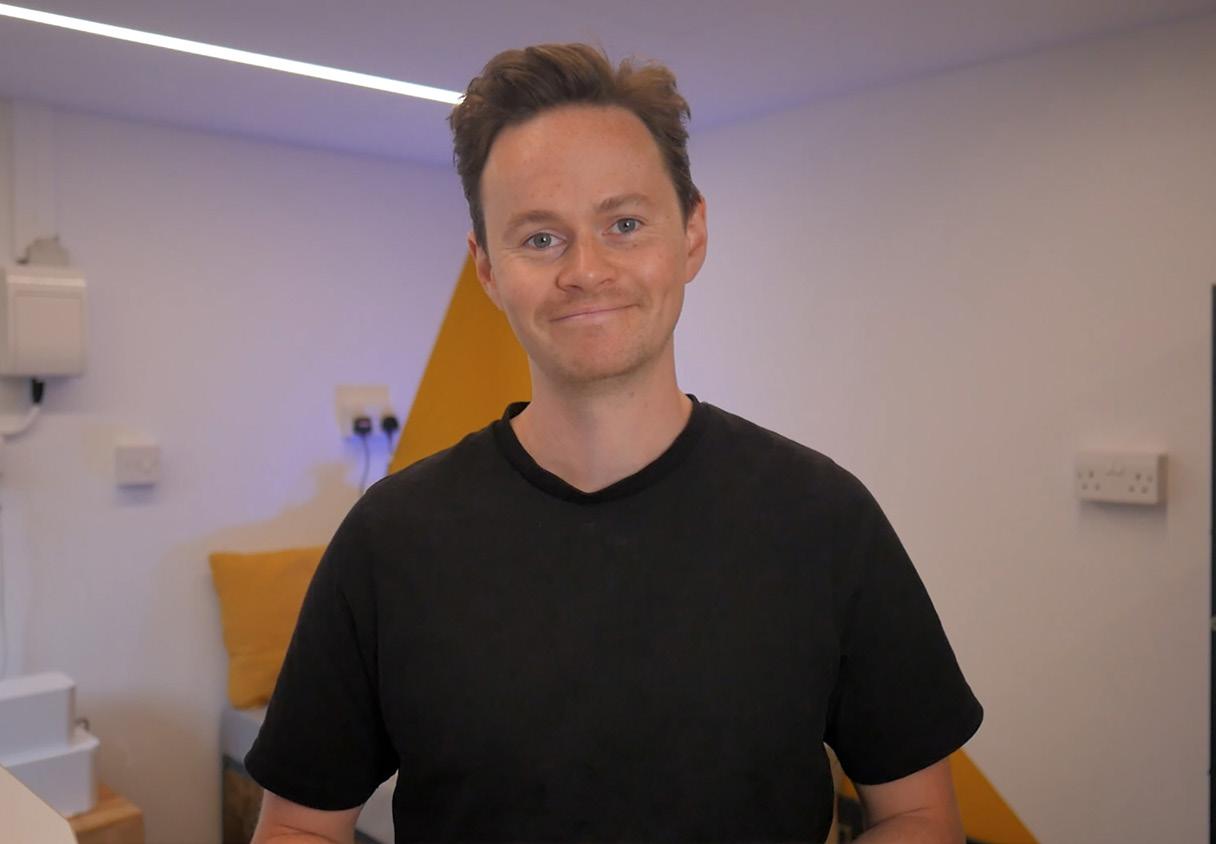
Higher Education Digest June 2024
Video production plays a crucial role in 21st-century digital marketing for Universities
order to engage participants before, during, and after post-event, it’s ever important to ensure the institution’s branding is cohesive, with engaging assets distributed on relevant channels. Doing a social media audit is a helpful tool to ensure that you’re reaching your audience on the channels where they show up. For example, you wouldn’t attempt to reach a new wave of academics on TikTok, but user-generated student content for student recruitment would be ideal for TikTok!
Disseminating Research Excellence
One of the primary objectives of hosting events in higher education is to disseminate cuttingedge research findings and facilitate academic dialogue. Conferences and symposiums can provide academics with a platform to present their work to a wider audience, receive constructive feedback, and engage in debates. This visibility enhances the impact of their research and opens avenues for collaboration and knowledge translation. By disseminating research findings through events, institutions contribute to the advancement of their respective fields and address pressing societal challenges through evidence-based solutions.
As an event organiser in HE, it’s crucial that you capture as much of the value at the event as possible. In the past, I’ve helped the University of Leicester to offer hybrid functionality for their ‘Landscape Decisions’ project. The outcome of this project was 29 videos that captured all knowledge and information shared at the event. This meant information could be shared for a month following the event and was of high value to all the speakers and researchers involved at UoL.
Post-Event Value Through Engaging Video
Video production plays a crucial role in 21stcentury digital marketing for Universities. Where one of the main goals for HE organisations is student recruitment, the importance of engaging video cannot be overstated when social media is one of the main marketing channels. Capturing the hard work that goes into an event is essential; those moments of human interaction, and learning, and capturing your institution’s facilities in their best light are essential for highlighting what your University has to offer.
41 Higher Education Digest June 2024
By embracing innovative approaches such as proficient event filming and hybrid functionality, institutions can amplify the impact of their events and extract maximum post-event value
By offering events with hybrid functionality, it enhances accessibility and inclusivity by accommodating remote participants who may be unable to attend in person. I’ve helped various Universities across the UK offer hybrid functionality (we do get some funny looks when we wheel in the 3 trolleys worth of visual/ audio kit that this requires!), which has helped increase participant engagement significantly. Additionally, post-event video content serves as a valuable resource for knowledge dissemination and marketing purposes. Institutions can leverage event highlights, keynote presentations, and participant testimonials to showcase their thought leadership and attract future attendees. In the
past, I have supported Universities to maximise value from their events and amplify their impact on academic discourse and research dissemination.
In conclusion, hosting events in higher education is essential for fostering stakeholder engagement, advancing research excellence, and enhancing institutional visibility. By embracing innovative approaches such as proficient event filming and hybrid functionality, institutions can amplify the impact of their events and extract maximum post-event value. As we navigate the evolving landscape of higher education, events remain indispensable catalysts for driving academic innovation and societal change.
42 Higher Education Digest June 2024
Want to Sell or find Investor for your Business?
43 Higher Education Digest June 2024 Digital First Magazine August 2021
Shaping Individuals who can, in their Essence, Create Impactful & Meaningful Brands
Dr.SmithaRanganathan,
Associate Professor - Contemporary Marketing, Brand Communication and Digital Strategy – S P Jain School of Global Management
Dr.SmithaRanganathan,amarketingstrategistwithover25yearsofexperience,andisdeeplyengaged with academia and organizations in the area of marketing. She has spent the last decade in academia, focusing on contemporary marketing and branding, with a notable emphasis on strategic approaches. Her career trajectory encompasses diverse roles, including account management, brand strategy, and business development. Her scholarly pursuits culminated in a doctoral thesis in marketing, specifically exploring the nuances of brand choice. She has authored several management concepts/frameworks and published over 50 papers, contributing significantly to the field of marketing and management. Prof. Ranganathan has been recognized for her contributions with awards including the Outstanding Young Management Teacher Award, Champion of Change Award, and Outstanding Content Leader Award.
Recently, in an exclusive interview with Higher Education Digest, Dr. Ranganathan shared her professional trajectory, insights on her mission and vision in patronizing Handlooms, the secret sauce behind her success, future plans, words of wisdom, and much more. The following excerpts are taken from the interview.
Dr. Ranganathan, can you tell us about your professional background and areas of interest?
My background is rooted in microbiology and life sciences, complemented by a doctoral degree in
marketing and strategy. I bring over twenty-five years of experience in brand communication strategy, navigating through both established companies and startups. My specialization lies in healthcare branding, where I’ve worked with
44 Higher Education Digest June 2024
ACADEMIC VIEW

In the current digital era, marketing practices can appear noisy and invasive, leading to misconceptions that I aim to clarify
45 Higher Education Digest June 2024
brands across seventeen countries. Recently, my focus has shifted towards supporting startup founders in creating compelling go-to-market strategies for their innovations, besides of course working with senior executives in helping plot their plane of possibilities.
You currently teach Digital Strategy, Brand Communication and Contemporary Marketing at S P Jain School of Global Management. What is the significance and relevance of this course study in today’s digital age?
Marketing is perhaps one of the most misunderstood domains. I’ve observed that even senior executives sometimes view marketing as a spectrum of being merely ‘manipulative’ to fiercely persuasive. My goal is to redefine this perception by emphasizing that marketing’s core purpose is not just to fuel the revenue engine but to drive and capture value. This perspective encourages everyone within an organization to see themselves as ‘value creators’.
In the current digital era, marketing practices can appear noisy and invasive, leading to misconceptions that I aim to clarify. Our world is increasingly trigger-happy in terms of information and reaction; thus, it’s crucial for marketers to adopt a stance that is both responsive and responsible, now more than ever.
What is your mission and vision in patronizing Handlooms?
From my adolescent years, I’ve harbored a passion for handlooms, attracted initially by their unparalleled comfort, even before fully understanding their significance. Over time, I’ve come to see handlooms as the epitome of creative expression, blending the skill and spirit

46 Higher Education Digest June 2024
I dream of a society that celebrates its craftsmen with the same enthusiasm as it does international fashion labels like Louis Vuitton or H&M
of the artisans who craft them. It has always struck me how there’s a notable gap in awareness and empathy towards the origins and legacy of India’s diverse handloom traditions.
My mission is to lead by example. Whether I’m lecturing in Sydney, Singapore, or Mumbai, I consistently choose to wear handloom garments. This practice, I’ve noticed, sparks curiosity and fosters a sense of appreciation among the younger generation towards these traditional weaves.
My vision is ambitious yet deeply personal: I aspire to witness a revival of Indian handlooms to their erstwhile prominence within my lifetime.
I dream of a society that celebrates its craftsmen with the same enthusiasm as it does international fashion labels like Louis Vuitton or H&M.
As an expert, how do you view the changes in the marketing landscape over the last five years?
While I hesitate to label myself as an expert, my deep curiosity about the evolving dynamics between consumers and organizations has kept me closely engaged with the marketing landscape. The past five years have been particularly fascinating, marked by shifts in priorities accelerated by the COVID-19 pandemic, leading to some permanent changes in consumer behavior.
Before the pandemic, there was a noticeable trend among Gen Z towards ‘experiential consumption’ over ‘ownership consumption.’ The mindset seemed to lean towards services like
47 Higher Education Digest June 2024

It’s noteworthy how brands now regard their online reputation with unprecedented seriousness, reflecting a broader shift in marketing strategies and consumer expectations
Higher Education Digest June 2024
Uber as placeholders until achieving their dream purchases. However, the pandemic prompted a reevaluation of ‘personal spaces,’ bringing about a resurgence of ownership in categories like automobiles, gadgets, and items requiring frequent physical interaction.
Additionally, regions such as Australia and the UAE have seen a surge in e-commerce for routine purchases. The health and fitness industry has also experienced a boom, with more businesses positioning health and wellness at the core of their value proposition.
From a branding perspective, the pandemic has acted as a filter, spotlighting brands with genuine differentiation and the agility to adapt operationally. It’s noteworthy how brands now regard their online reputation with unprecedented seriousness, reflecting a broader shift in marketing strategies and consumer expectations.
How are social media and other digital marketing channels changing the DNA of marketing? How are they redefining the ways in which brands connect with customers and the attributes of emotional bonds and trust?
At its core, marketing for me has always been about navigating the delicate balance between influencing consumer motivations and alleviating their anxieties. This fundamental aspect of marketing remains unchanged. However, the advent of digital channels has profoundly altered the methods through which brands construct and disseminate their narratives. The challenge of convincing consumers ‘why us’ now requires concise messaging that is tailored to specific audiences based on their location and behavior.
The dynamics of loyalty and trust have evolved into a nuanced interplay, akin to an elastic tug-of-
war, with both customers and marketers applying force from their respective ends. Brands now see loyalty not merely as a sequence of repeat purchases but as an opportunity to cultivate genuine advocacy among their customers. On the other side, customers seek brands that champion a cause, extending beyond traditional functional benefits to embody a deeper, more resonant purpose.
Furthermore, in today’s always-on digital environment, marketing teams must adapt to operating in air traffic control-like ‘response rooms.’ This setup is crucial for managing realtime engagement with consumers who demand immediate resolutions and interactions. The critical task for brands today is to ensure that their professed values and purposes are not just hollow promises but are evidenced in every action and interaction, steering clear of superficiality.
This shift underscores how digital channels are revolutionizing the way brands forge connections, emphasizing authenticity and a commitment to living out their stated missions.
While technology is helping marketing become more personalized and adaptive, there are also concerns over privacy. How can companies get around the problem?
The digital landscape has indeed become both noisy and invasive, blurring the line between personalization and intrusion for consumers, particularly among Gen Z and other digital natives. The key to maintaining this delicate balance is for marketers to reaffirm their commitment to being ‘value creators’ in their customers’ lives. This approach encourages a more ethical use of marketing tools, ensuring that personalization enhances value without compromising privacy.
49 Higher Education Digest June 2024
By prioritizing first-party data collection—directly from customer interactions— companies can maintain personalization while respecting privacy
Moreover, the evolving legislative landscape worldwide is prompting a reevaluation of data collection practices, particularly regarding third-party cookies. These changes are pushing companies to innovate in how they gather and utilize consumer data. By prioritizing first-party data collection—directly from customer interactions—companies can maintain personalization while respecting privacy. This shift not only complies with stricter privacy regulations but also builds trust with consumers by demonstrating a commitment to ethical data practices. In this environment, transparency becomes paramount. Companies must clearly communicate how they collect and use data, giving consumers control over their information. This open dialogue can help mitigate privacy concerns, fostering a relationship based on trust and mutual respect. As marketing evolves, finding this balance between personalization and privacy will be crucial for companies seeking to engage customers in a meaningful and responsible manner.
You have been a recipient of numerous prestigious awards and accolades over the years. Our readers would love to know the secret sauce behind your success. I’m truly honored and humbled by the recognition my work has received over the years, and I extend my deepest gratitude to the supportive ecosystem around me that has allowed me to be unapologetically myself. These awards are not just personal
50 Higher Education Digest June 2024
triumphs but also reflect the kindness of those who choose to celebrate a path that doesn’t necessarily follow a conventional template.
At the heart of my approach, both personally and professionally, is a commitment to excellence in everything I undertake. I embrace the freedom to make mistakes, viewing each misstep as an opportunity for learning and growth. This mindset has fostered a resilient and purpose-driven path for me. In essence, my ‘secret sauce’ is a blend of relentless dedication, openness to learning from failures, and a deep-seated belief in the value of authenticity and hard work.
If you could give yourself one piece of advice at the start of your career, what would it be?
“Don’t try to fit in!” Looking back, I am immensely thankful for the incredible mentors I had early in my career who helped me embrace this wisdom. Their guidance was instrumental in shaping my path, encouraging me to value my uniqueness and chart my own course rather than conforming to conventional expectations. This piece of advice has been a guiding light throughout my journey, reminding me of the strength found in authenticity and the importance of forging one’s own path.
How do you define success? What is your take on the ways to achieve longterm success?
To me, success is profoundly personal and cannot be measured solely by quantitative metrics such as ratings or the number of companies one mentors. It is about investing a
part of oneself in every endeavor and finding fulfillment not in external accolades but in the continuous journey of self-improvement. Success is the ability to inspire oneself to consistently elevate one’s standards, no matter how incremental those improvements may be. It’s about setting personal benchmarks and striving to surpass them, thereby achieving a sense of accomplishment that is deeply rewarding and inherently motivating for longterm growth.
Where do you see yourself in the next 5 years?
Having spent 25 years in brand building, my hope is to continue nurturing individuals. I envision a path dedicated to empowering people to establish brands that embody conscientiousness and compassion, mirroring their own ideals. My aspiration is to continue contributing by shaping individuals who can, in their essence, create impactful and meaningful brands.
What piece of advice would you give to aspiring marketing professionals across the globe?
To all marketers, I emphasize the importance of humility in our profession. It’s crucial to continuously learn and unlearn the context of consumer motivation. For those embarking on the startup journey, view marketing as a valuable investment rather than an expense. And to the veterans in established companies, embrace agility and remain open to innovation. The business landscape is ever-changing, and staying nimble is key to navigating potential disruptions effectively.
51 Higher Education Digest June 2024
INDUSTRY PERSPECTIVE
Leveraging the Potential of Esports in Higher Education to Engage Male Students
Dr. Kristy Custer, President of Educational Innovation for Generation Esports
In recent years, esports, or competitive video gaming, has gained widespread popularity among young people. Males in particular are drawn to video games with reports stating that as many as 96% of boys aged 9-18 play video games regularly. With recent data highlighting concerning trends indicating a disparity in enrollment, academic performance, and graduation rates
between male and female students, colleges and universities across the globe are increasingly integrating esports into their academic offerings to engage males.
Beginning at a young age, statistics reveal a troubling picture of male academic performance. Boys are disciplined at significantly higher rates than girls and are three times more likely to be expelled. Male test scores consistently trail
With recent data highlighting concerning trends indicating a disparity in enrollment, academic performance, and graduation rates between male and female students, colleges and universities across the globe are increasingly integrating esports into their academic offerings to engage males
52 Higher Education Digest June 2024
Dr. Kristy Custer is the President of Educational Innovation for Generation Esports. She leads a team that writes a curriculum which assists schools in integrating esports scholastically, socially, and competitively. Dr. Custer was an educator for 24 years and was named the 2018 Kansas Principal of the Year. As a teacher and administrator for at-risk students, she led her school to two National School of Character awards as well as the National Dropout Prevention Crystal Star Award. Dr. Custer has written several nationally and internationally recognized curriculum including a character education guide and full-credit courses for esports and gaming Concepts.
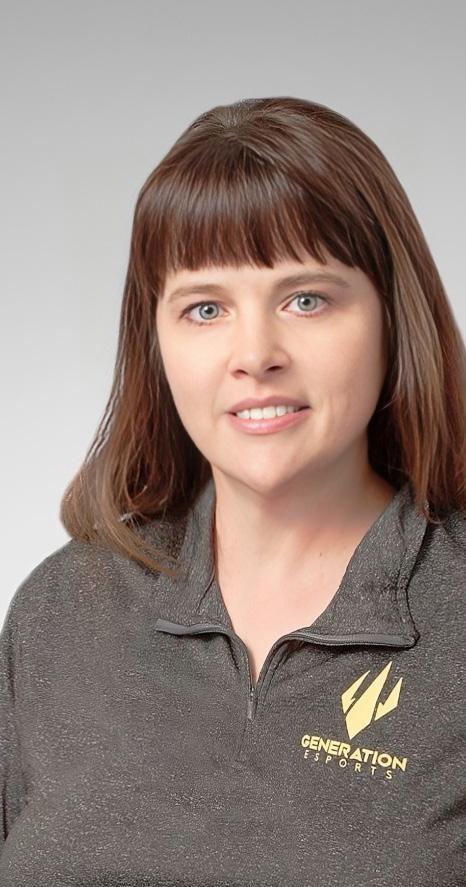
those of females, and after years of falling behind, females have caught up with males in math and are almost a grade ahead of males in English.
A comparison of male and female grade point averages highlights this imbalance, with twothirds of the highest achievers being girls, while two-thirds of the lowest achievers are boys.
The gap extends from K-12 education into higher education institutions, where female enrollment now surpasses male enrollment by a significant 16%. This widening gender gap marks a stark contrast to the 13% enrollment advantage men held over women when Title IX was passed in 1972, signaling a notable shift in the educational landscape.
These educational discrepancies also manifest in economic and social challenges. Graduation rates from high school are lower for males compared to females, with only 82% of males graduating compared to 88% of females. The substantial differences in educational attainment translate into lower labor force participation rates among men, resulting in over 9 million fewer men working compared to the share of men in the labor force in 1960. In addition to academic and economic repercussions, there is also a concerning rise in deaths of despair among men, including suicide, overdose, and alcohol-related fatalities, which are three times higher than those in women.
Amidst these obstacles, there is a glimmer of hope in the form of scholarly esports. In a nod to recognizing esports as the fastest-growing sport globally, with abundant career prospects, colleges and universities are now offering specialized degrees in esports management, game design, esports marketing, and related fields. These programs provide students with a comprehensive understanding of the esports
By leveraging the potential of esports, colleges and universities can empower male students to thrive academically while pursuing their passion for gaming and fostering social connections
54 Higher Education Digest June 2024
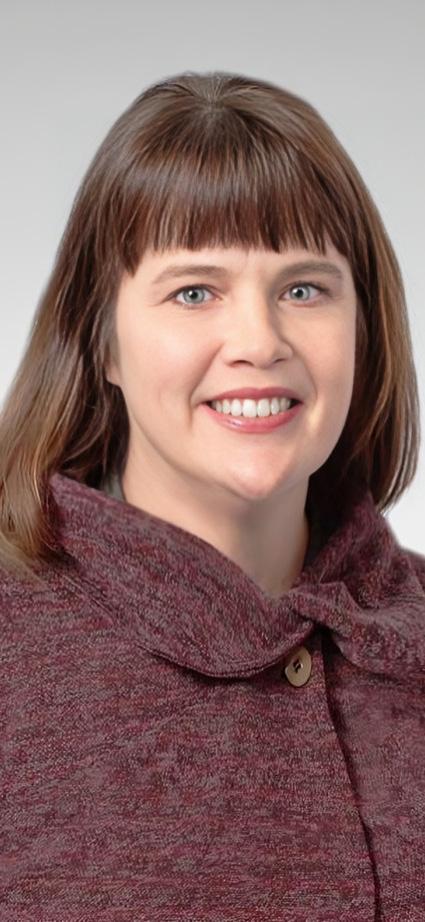
industry, including its business aspects, technology, and competitive landscape. Esports majors equip students with the skills and knowledge needed to thrive in various roles within the esports ecosystem, including team management, event coordination, and content creation. Research has also shown that participation in esports can even enhance cognitive skills, such as critical thinking, problem-solving, and strategic planning. These skills are not only valuable in the gaming arena but also transferable to academic pursuits and future careers. By leveraging the potential of esports, colleges and universities can empower male students to thrive academically while pursuing their passion for gaming and fostering social connections.
In addition to academic programs, colleges and universities are also offering scholarships to esports athletes. With over $20 million in scholarships offered annually, esports scholarships provide financial support to talented gamers while incentivizing academic achievement. These scholarships are open to students of all backgrounds, providing a pathway to higher education for those who may not have considered traditional sports or academic scholarships.
In response to critics’ claims, research consistently refutes the misconception linking video games to violence. Instead, it underscores the potential of collaborations between the gaming industry and clinicians to address mental health issues. In fact, Stanford researchers studying the link between video games and gun violence stated, “Our studies have found that continuing to lambast gun violence as the end result of video game use has no factual or
55 Higher Education Digest June 2024
The integration of esports into higher education has far-reaching implications for student success and empowerment
research basis. With the spread of collaborations between the gaming industry and clinicians, video games might even be part of the solution.”
Other studies have shown that adolescents enrolled in scholarly gaming curricula have experienced improved self-esteem, underscoring the positive impact of nontraditional educational instruction on students’ well-being.
The integration of esports into higher education has far-reaching implications for student success and empowerment. Esports provides a platform for students to showcase their talents, develop critical skills, and forge meaningful connections within the gaming community and beyond. Esports fosters a sense of belonging and camaraderie among
students, creating a supportive environment for academic and personal growth that young men are yearning for.
As we navigate the evolving landscape of higher education, it’s essential to embrace innovative approaches that cater to the diverse needs and interests of students. Esports represents a promising avenue for empowerment, particularly for men who may face unique challenges in academic settings. Through esports majors, college scholarships, and academic programs, colleges and universities are providing students with opportunities to thrive academically while harnessing esports’ potential to empower the next generation of leaders, innovators, and esports athletes.
56 Higher Education Digest June 2024

Helping Institutions & their Partners Find & Implement Right Strategies, Structures & Resources Necessary to Succeed in the Post-Pandemic World
Michael Goldstein, Managing Director and Co-Creator, Center for Higher Education Transformation, Tyton Partners
Mike Goldstein is a Managing Director atTyton Partners, a strategy consulting and investment banking firm focused on the education vertical. He serves as chair of the Board of Trustees of Vermont College of Fine Arts and is a Board member and past chair of Fielding Graduate University. He is a Director of the University of the District of Columbia Foundation, The Washington Center, The Washington Ballet, where he is a former vice chair, the District of Columbia Fire and Emergency Medical Services Foundation, and a member and past president of the Friendship Fire Association, as well as formerly a Director of the American Association for Higher Education and aTrustee of Mount Vernon College, as well as a long-time. He is a member of the Cornell University External Education Advisory Council, and he has served as Chair of the Committee on Legal Education of the National Association of College and University Attorneys, Cochair of the Education Grants Committee of the Federal Bar Association and Chair of the Education Law Committee of the American Bar Association.
Hi Michael. What attracted you to your chosen field and profession?
My field is education. How I got here is a matter of pure happenstance. Going back to my very early years, I was always a tinkerer. I was fixing radios, and then televisions (back in the days
when they could be fixed by replacing a tube or a resistor) when I was in my very early teens. Everyone said I was destined to be an electrical engineer. I went to Stuyvesant, NYC’s elite science high school, and then to Cornell as an electrical engineering student.
58 Higher Education Digest June 2024 ACADEMIC
VIEW
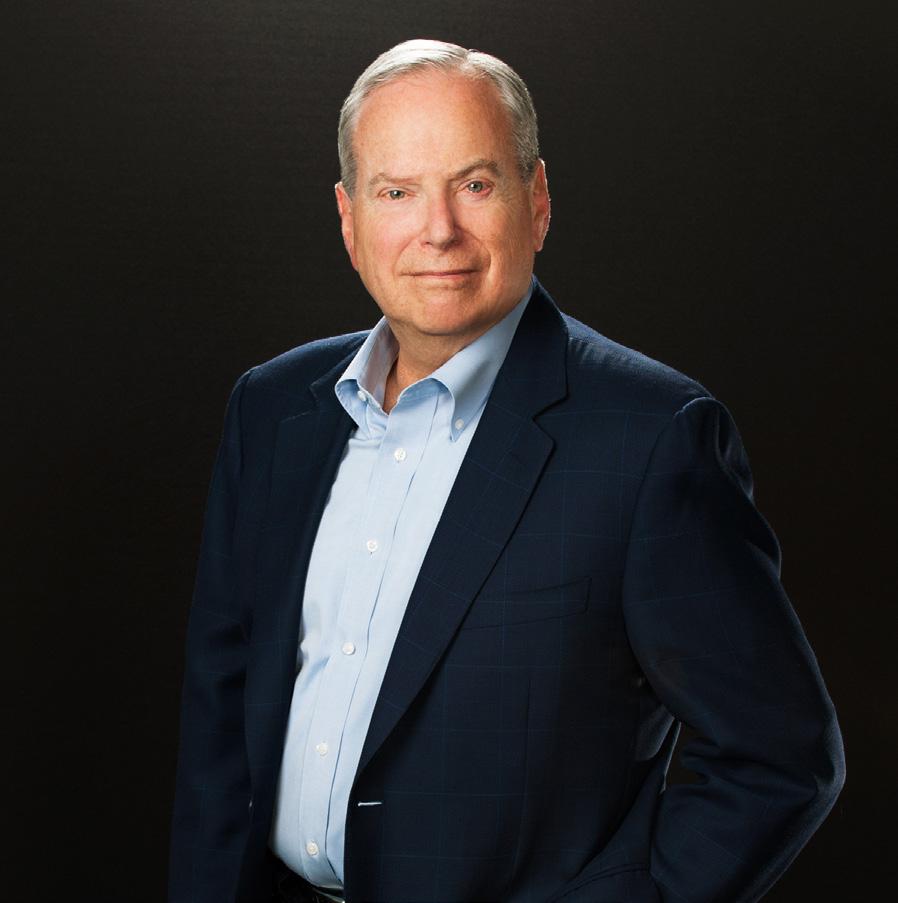
A good education is essential, but it is without value if one cannot access it
59 Higher Education Digest June 2024
I was an engineering student, so I signed up to work at a student-run commercial radio station, WVBR, where I naturally worked in the control room.
I was always snooping around the United Press International (UPI) teletype machine, clattering away in a closet across from where I was seated. One day, the News Director asked if anyone could cover a campus event – I volunteered, wrote a passable story, and I was hooked.
At about the same time, I realized the last thing I really wanted to do was play with numbers – the life of an electrical engineer –but I loved words and writing. I transferred to Liberal Arts as a government major and in due time I myself became WVBR’s News Director.
I discovered that with that title came the job of Finger Lakes Region “stringer” for UPI, a stringer being an on-call, paid by the word, reporter. I got a few stories on the wire and then, by another exceptional bit of good fortune I was selected for a Wall Street Journal Newspaper Fund internship. Now, most of those were with small regional papers – I grabbed the gold ring: the UPI New York City bureau.
To say the journalism hook was set is an understatement. I loved the work and as a (very) young reporter I seemed to do pretty well. I covered a lot of stories, including the Harlem and Bedford-Stuyvesant civil disturbances. One of my stories even made the front page of Scripps-Howard newspapers across the country, including the World-Telegram in New York. I was on top of the world.
For a variety of reasons, some of which seemed persuasive at the time, I also decided to
go to law school. I attended NYU, all the while continuing to work for UPI.
Meanwhile, New York politics were going through an upheaval. Tammany Hall, the old political machine, was in its death throes, and a new breed of young leaders with new ideas for the future of the City were emerging, none more attractive than John V Lindsay, a liberal Republican (yes, there were those in the day) member of Congress representing the Upper East Side of Manhattan, called the “Silk Stocking District.” Lindsay had ideas for dramatically changing the City, and he was surrounded by a whole lot of very smart people. I wanted to be a part of that movement.
However, I had no idea how to get a meaningful role in his campaign. Then I learned that he had tapped a professor at NYU’s graduate business school, Timothy Costello, to be his running mate for City Council President. I had done some survey work for Costello (my college roommate was a student of his) and I decided to reach out to his campaign. When I said I was working as a UPI reporter, I was introduced to his campaign press secretary, Phil Finkelstein. Presto: I became Deputy Press Secretary! Which said a lot about the campaign.
I did one thing that turned out to be of importance to me and I must admit, the City. I wrote a speech for Dr. Costello for delivery at Barnard College, in which he decried the fact that young people were becoming estranged from their city. “I propose an Urban Corps,” the speech read, “in which young people can become connected to this great City.”
The speech received a few inches of favorable press and come November Lindsay won election. Sadly (if not unexpectedly) Dr. Costello did not.
60 Higher Education Digest June 2024
Higher education needs to be faster, better and cheaper. Nearly everyone agrees on that premise: now we have to find ways to achieve it
So much for my career in politics, or so I thought. I returned to my law school studies.
In February, I got a call from Phil Finkelstein, now press secretary to Tim Costello, recently appointed by newly minted New York City Mayor John V. Lindsay to serve as his Deputy Mayor-City Administrator. “Hi, Mike,” Phil said. “The Mayor loves your Urban Corp idea. He wants Tim to do it.” “Great,” I said, feeling grateful for the credit but wondering why the call. Then the question: “What’s an Urban Corps?” asked Phil. “I have no idea,” I said. “Get down here,” he replied.
And so, it happened. A brilliant Yale doctoral student, Andy Glassberg, and I were charged with “making an urban corps,” which four months later emerged as the nation’s largest urban college student intern program. But that is another story. I was hooked on higher education.
What does education mean to you? And what message do you have for those young men and women around the world who are struggling to get access to it or perhaps don’t have access to education at all?
I am a child of middle-class privilege. I assumed, as my parents fervently did, that a good education was – and is – the ticket to a good life. The driving idea behind the NYC Urban Corps was in fact access: what made the program unique was that every participant had to be a college student who needed to work to go to school. The program was funded through what was then called “College Work Study” (now known as Federal Work Study) that was available only to students with demonstrated financial need – what we define today as “Pelleligible.” Even then, in the 1960s, there were lots of experiential programs for young men and women who could volunteer their time – but if your family
61 Higher Education Digest June 2024
was poor, you didn’t have that luxury: you had to work to go to school, and likely also help support your siblings and perhaps parents. Until the Urban Corps, virtually all of the CWS money was used on campus to pay students to shelve books in the library or clean up the cafeteria. For thousands of students, Urban Corps changed that – their internships were required to be learning experiences within city agencies and non-profits: valuable to them and to the agencies for which they worked. A good education is essential, but it is without value if one cannot access it.
With limited funding, where do you think countries should prioritize their higher education investments?
There is no one answer. It is also a question that cannot be answered in a vacuum. If a country does not have an effective public primary and secondary education system, higher education becomes the province of the upper classes. Social mobility becomes a dream rather than a reality. Investment must be in ensuring a quality educational system that ensures a pipeline of students capable of benefiting from higher education. From there it becomes a function of what each nation, indeed each community, needs to fulfill its future, as well as to provide its young people with the opportunity to reach their full potential. What is becoming clear is the importance of experiential learning –going beyond the classroom to make the learning experience real and relevant.
How should the research community convey the importance of increased and targeted higher education investments?
Outcomes, outcomes, outcomes. What works, and why. What is not only effective but efficient. What is not only efficient but socially productive.
Everyone does not need to have a four-year college degree. Indeed, college doesn’t need to take four years. Higher education needs to be faster, better and cheaper. Nearly everyone agrees on that premise: now we have to find ways to achieve it.
What tools or tactics do you rely on being a more effective leader and team member?
My first priority is surrounding myself with people who are better than I am, most particularly in those areas that are not my strengths. Then challenge them to be problemsolvers, to find answers. No one wants to pay someone to be told they cannot accomplish what they are seeking. The job of a lawyer, consultant or indeed any manager is to find a way to “yes” and to inculcate in their team the visceral desire to accomplish that goal.
What safeguards would you recommend to ensure the pursuit of cost efficiency doesn’t undermine equity in higher education?
This is an inadequate, if not false, equation. The essential elements of education are access for all (shorthand, “equity”) to education that affords every individual the opportunity to follow their interests and desires to the fullest extent of their capabilities. If “cost efficiency” means making higher education more efficient – that is, less costly – in the pursuit of that goal, it is a benefit, not a risk. Money, most particularly public money, is finite. It is essential that higher education be cost-efficient; the challenge is to combine cost efficiency with quality and accessibility. Once again, the answer has to be outcomes. Not what does it cost, but what does it achieve.
62 Higher Education Digest June 2024









 Sarath Shyam
Sarath Shyam





















 MENTOR’S MANTRA
MENTOR’S MANTRA

























